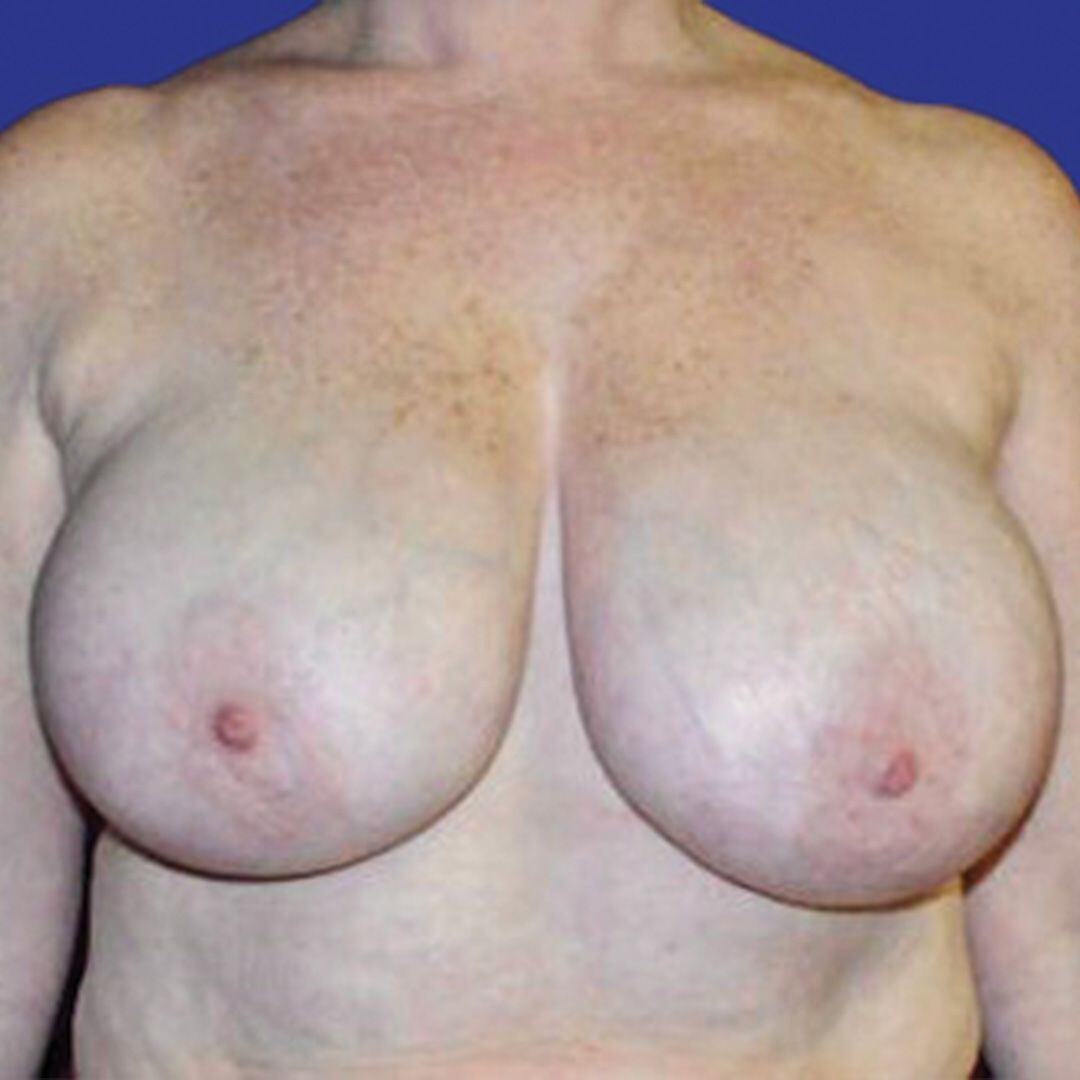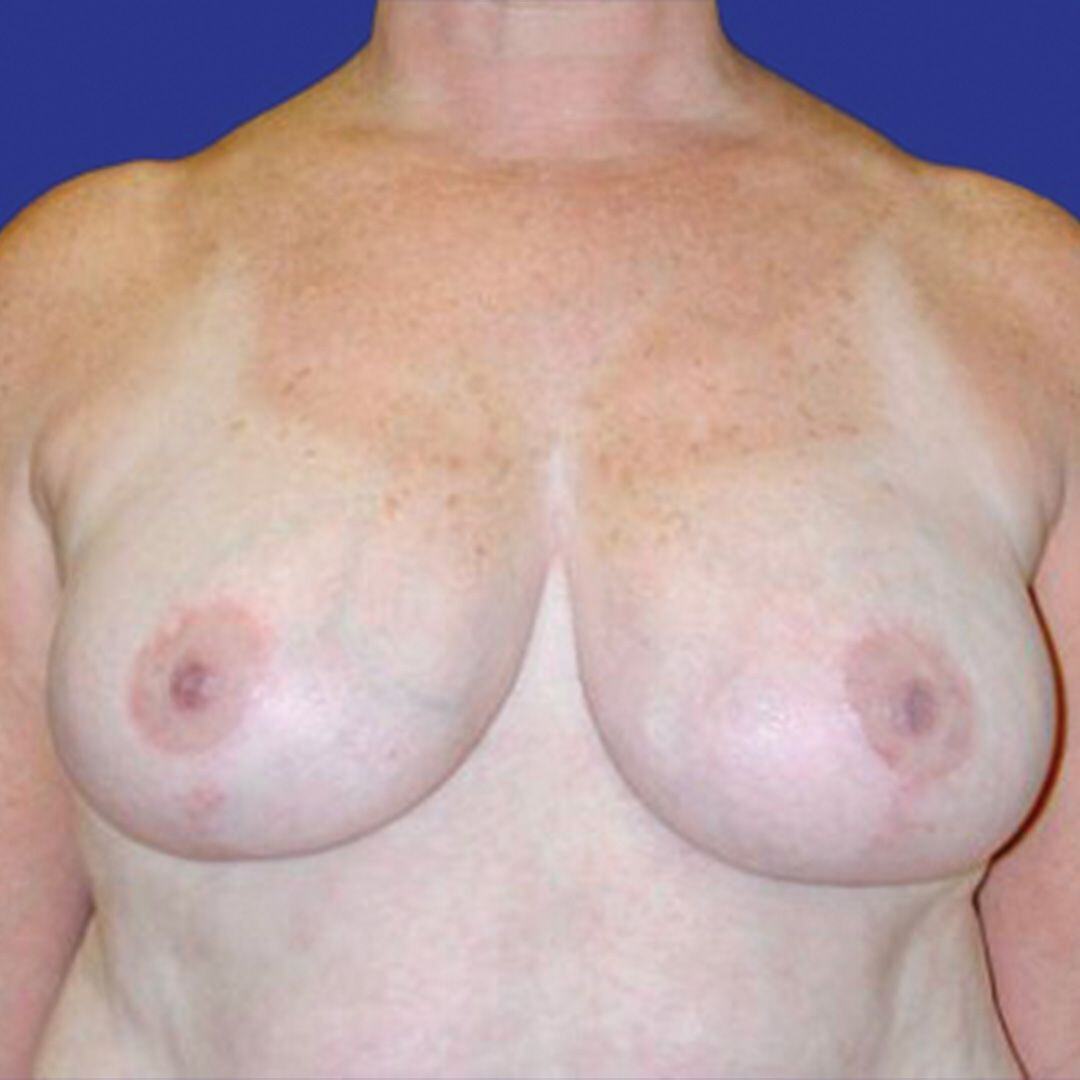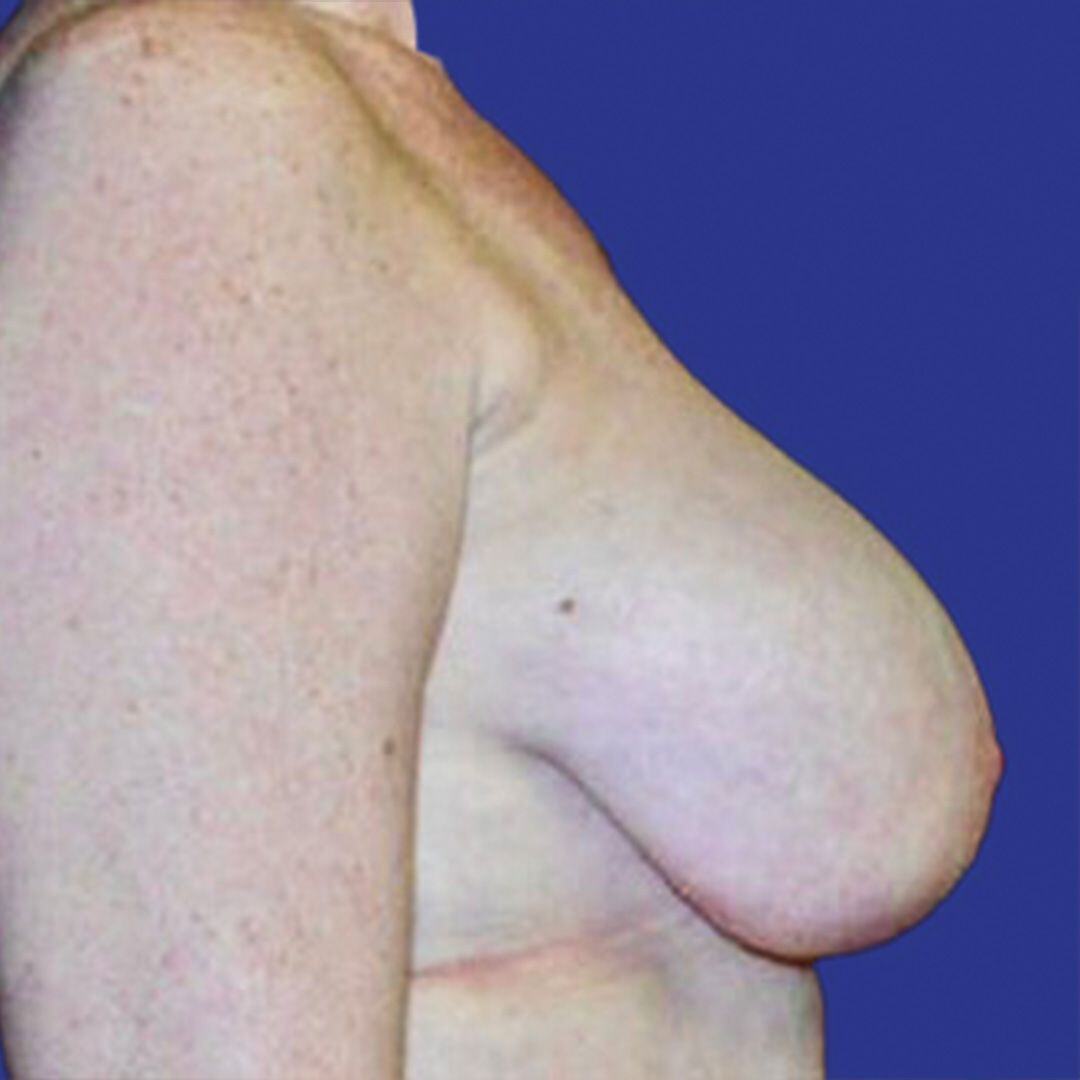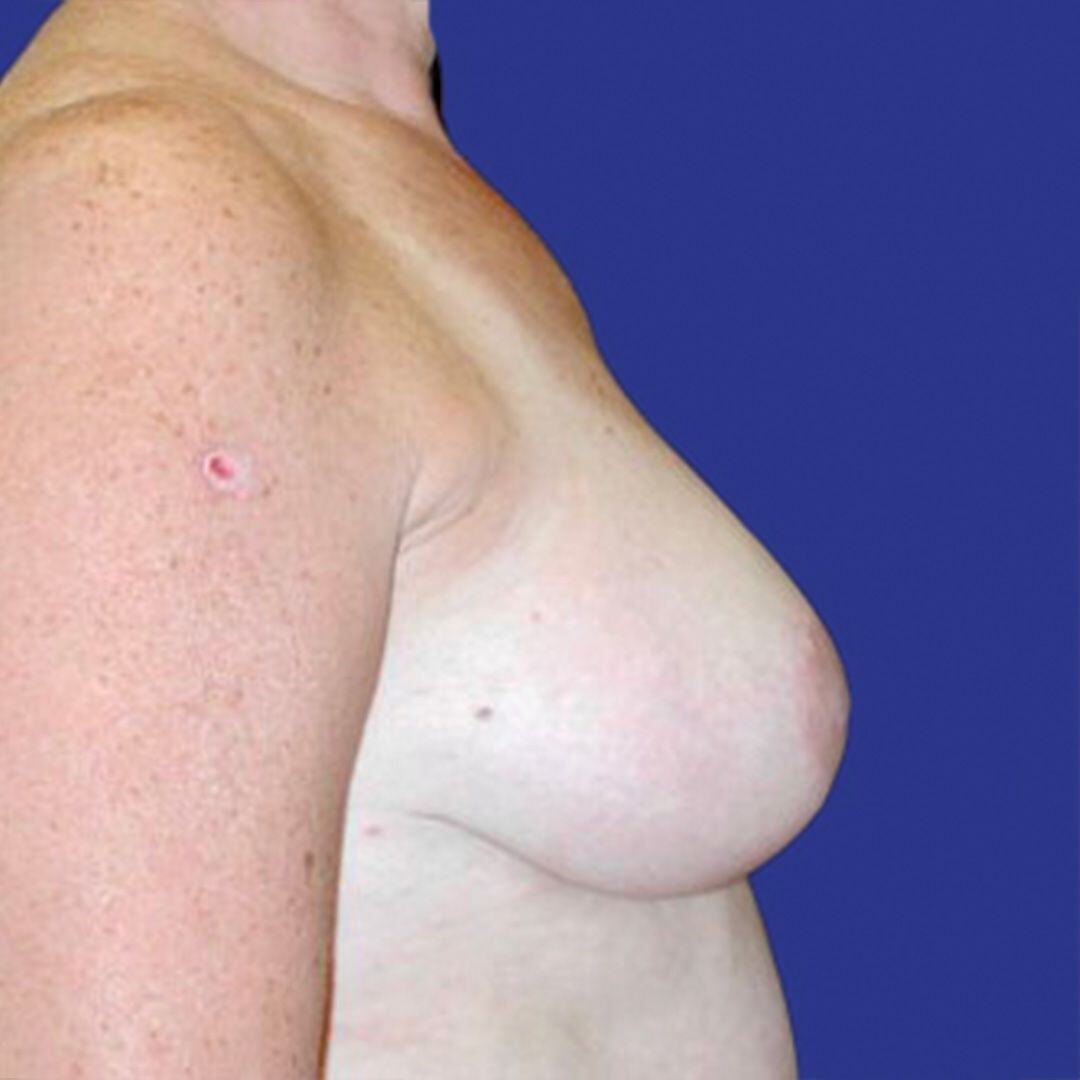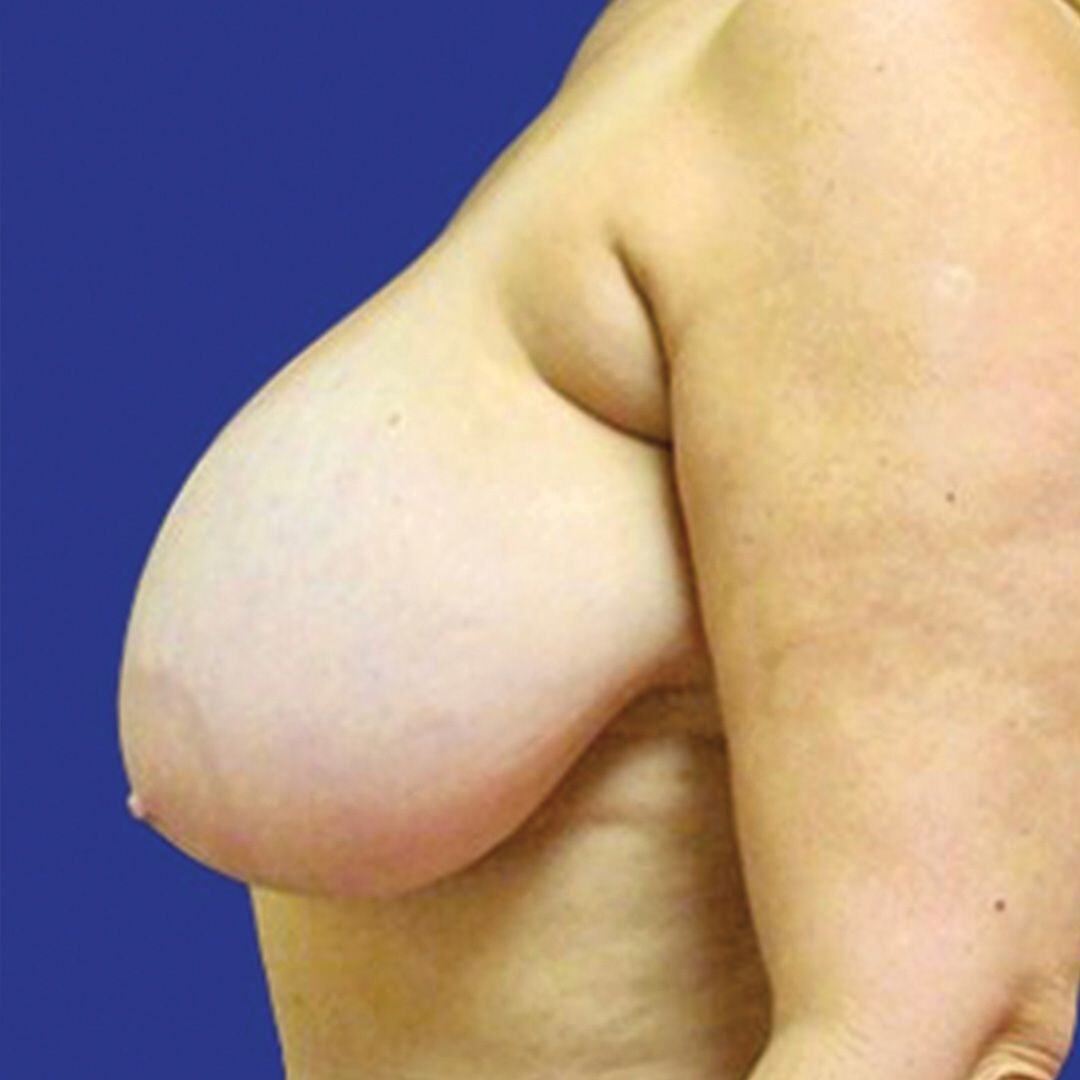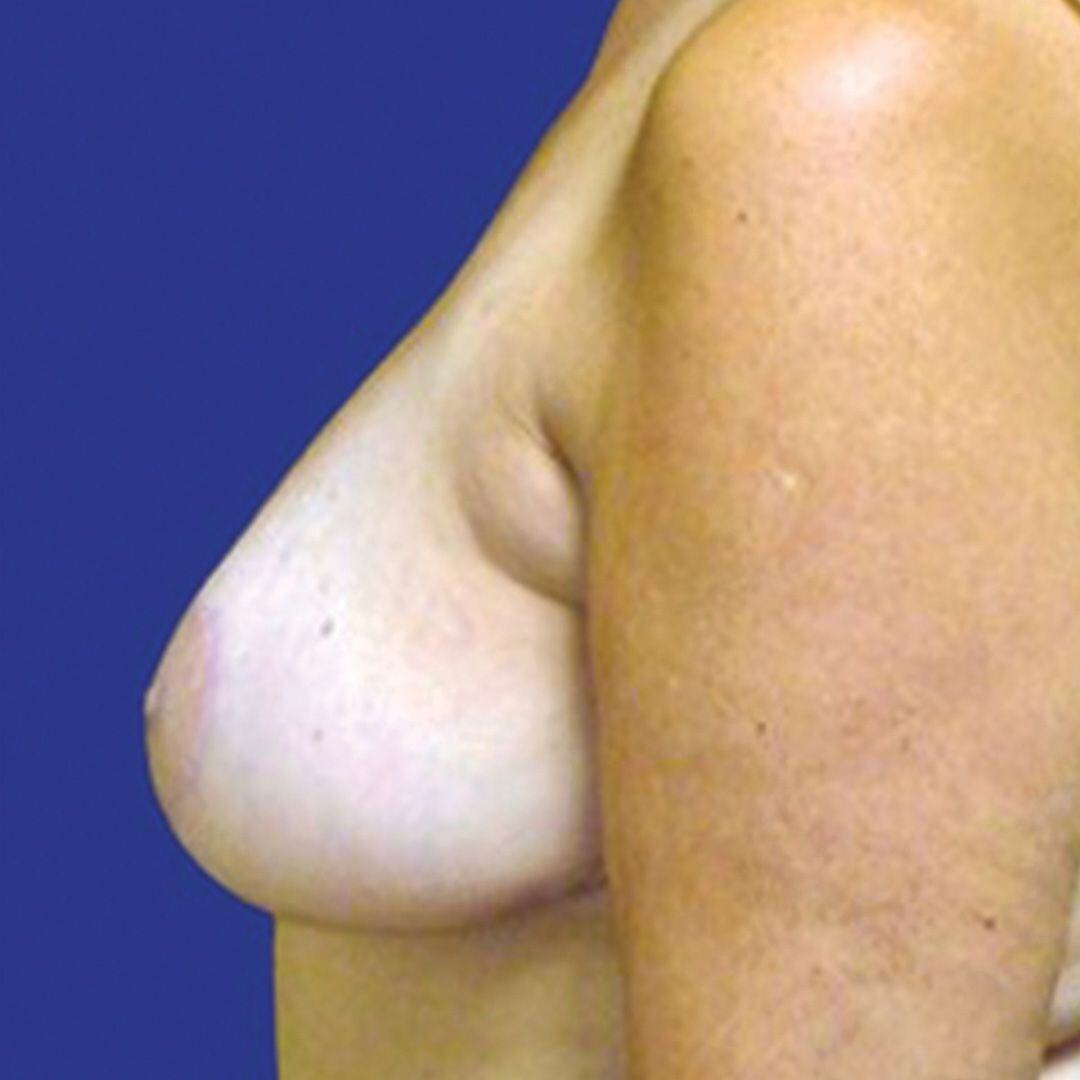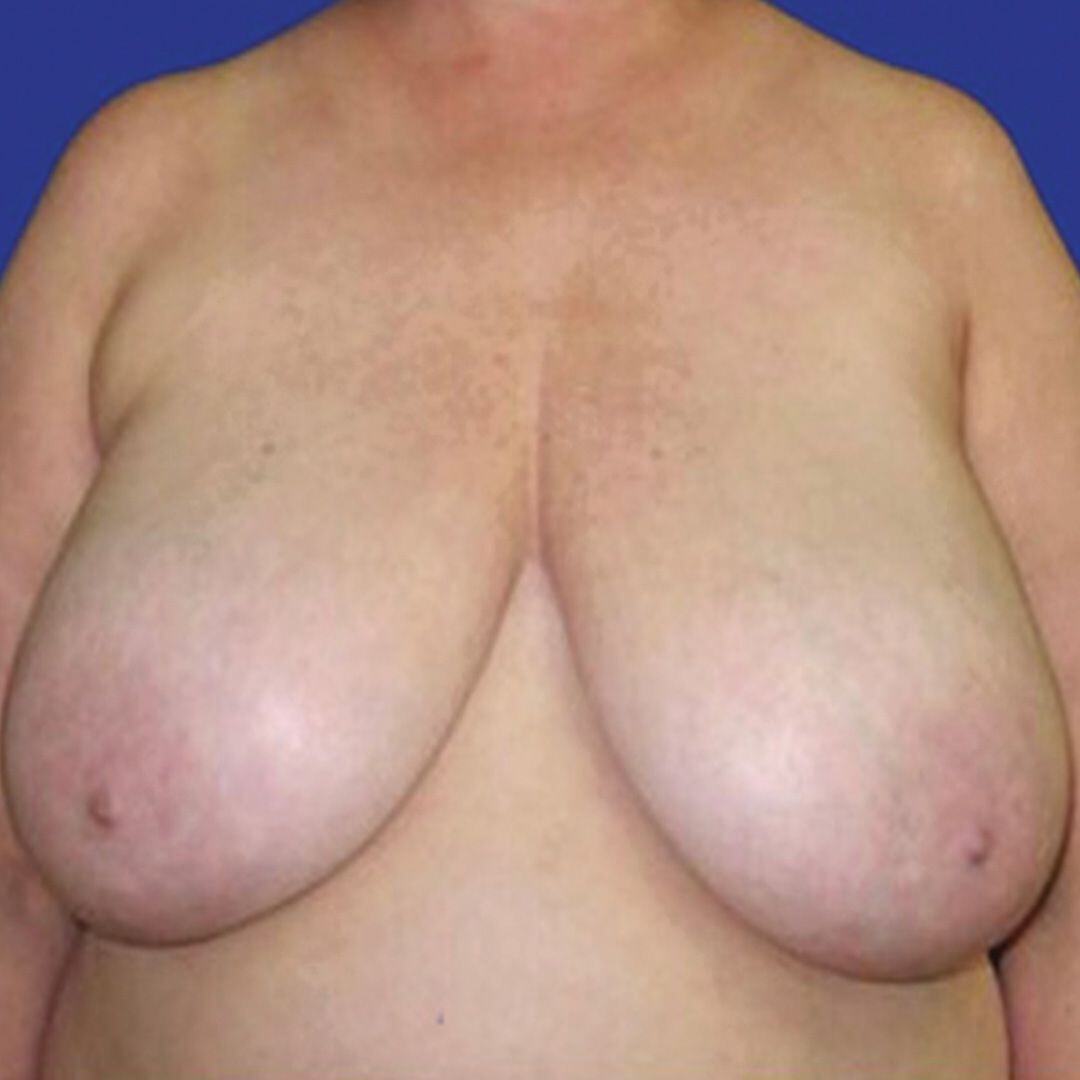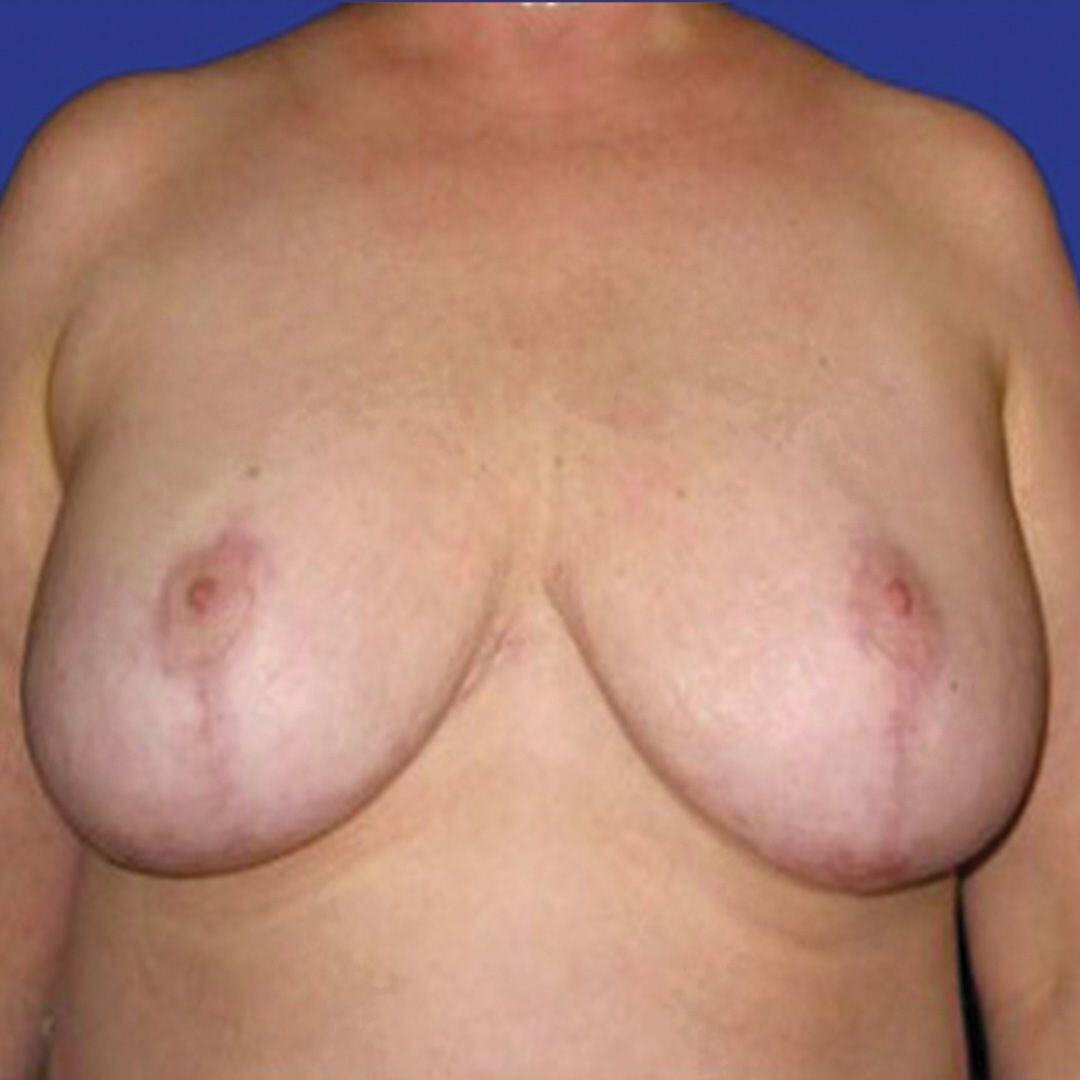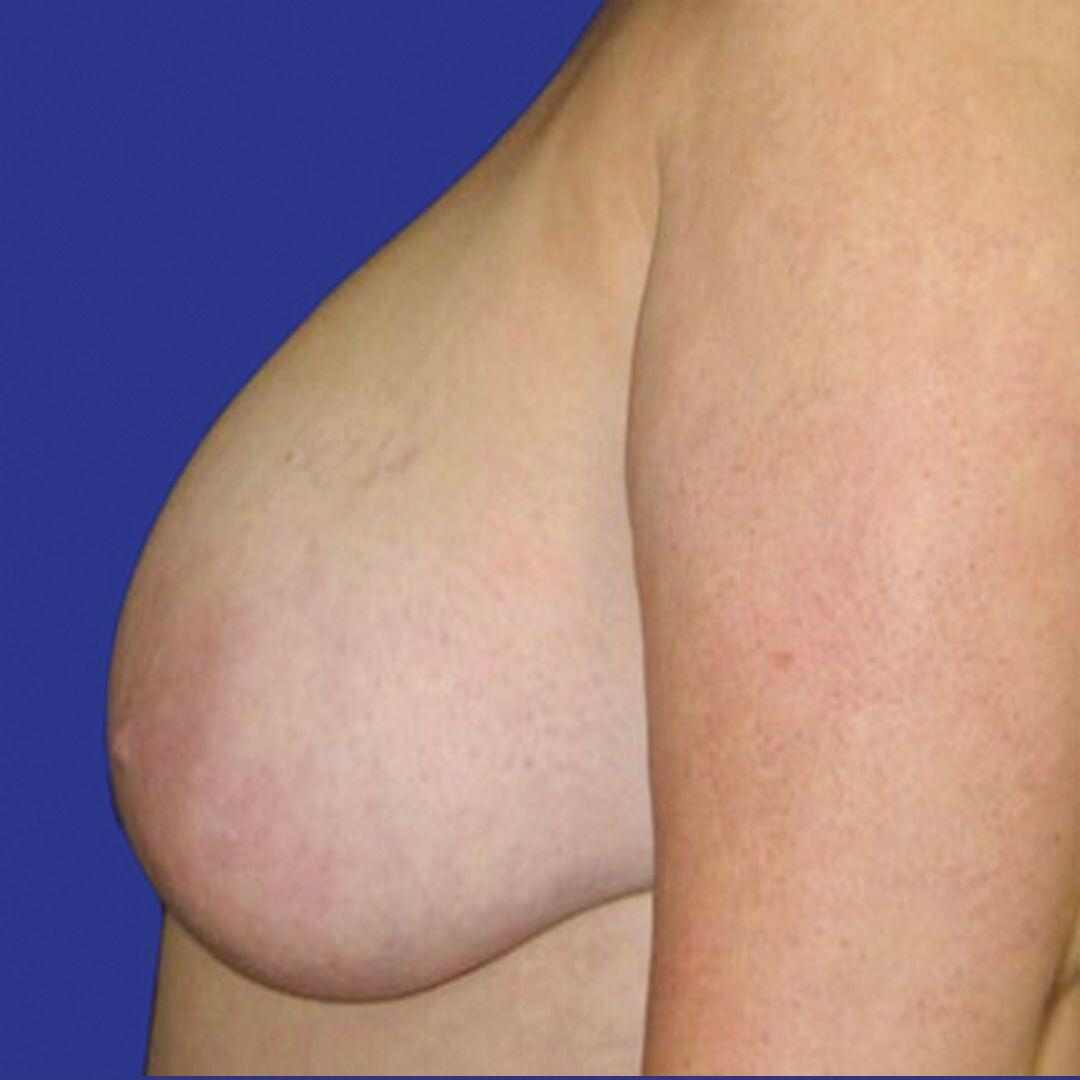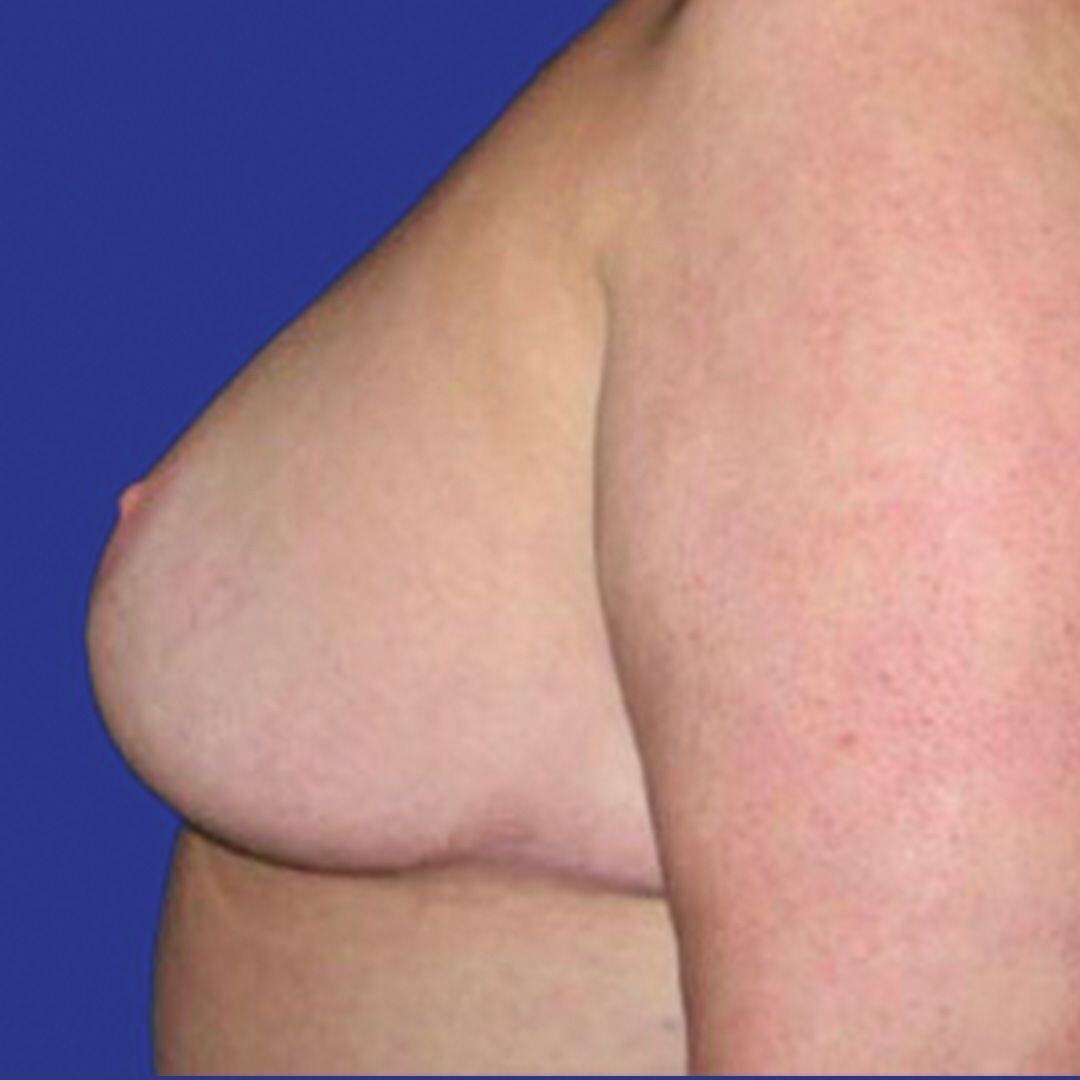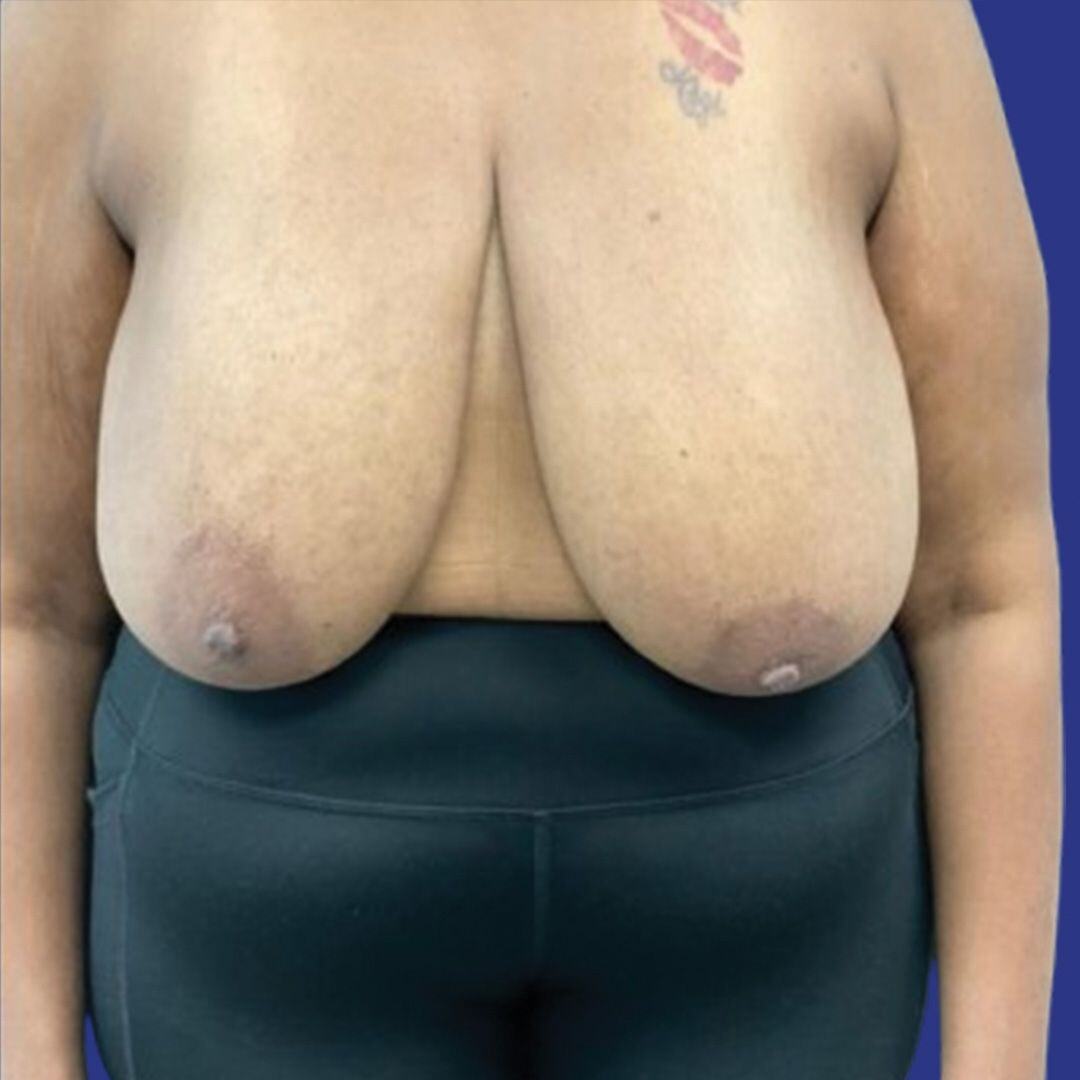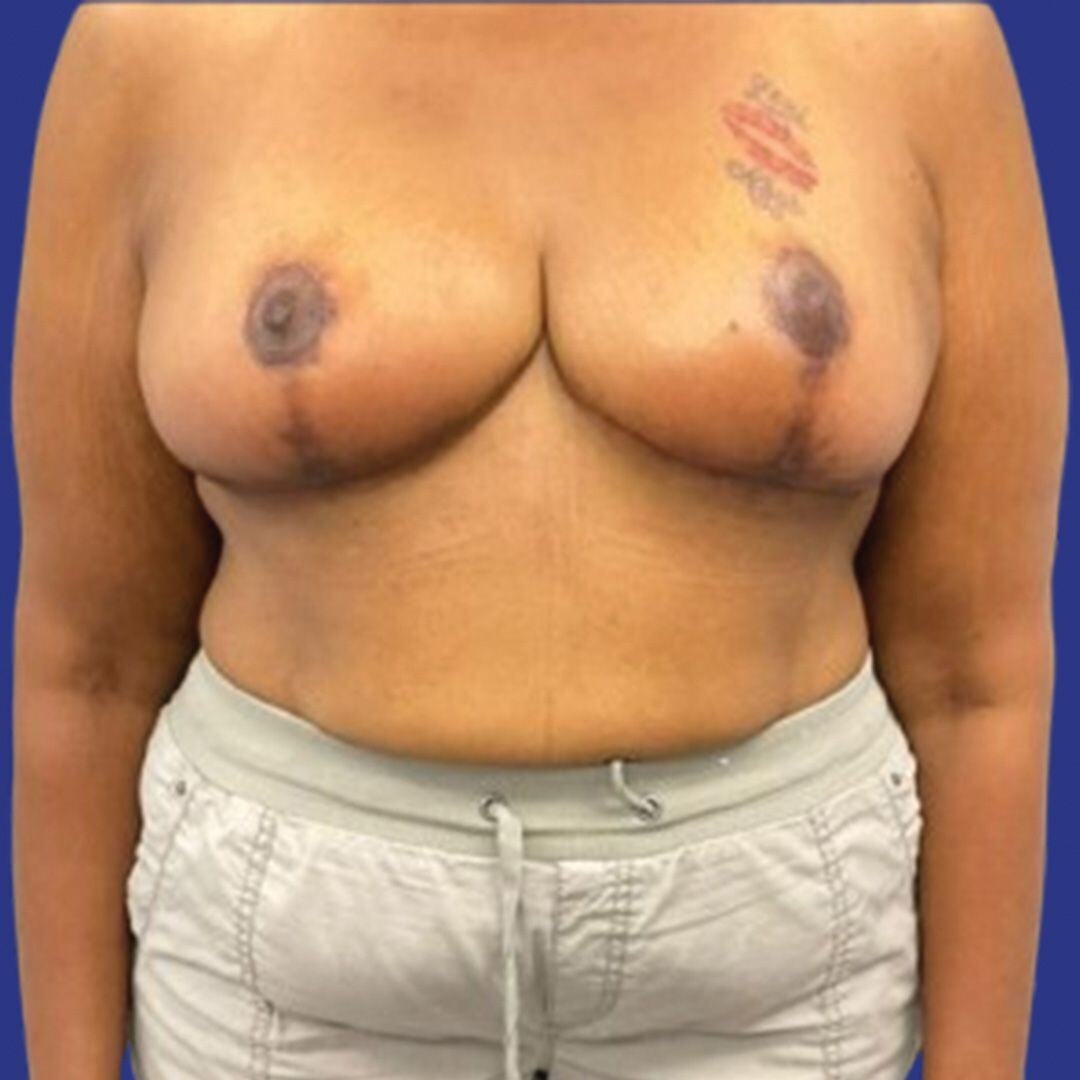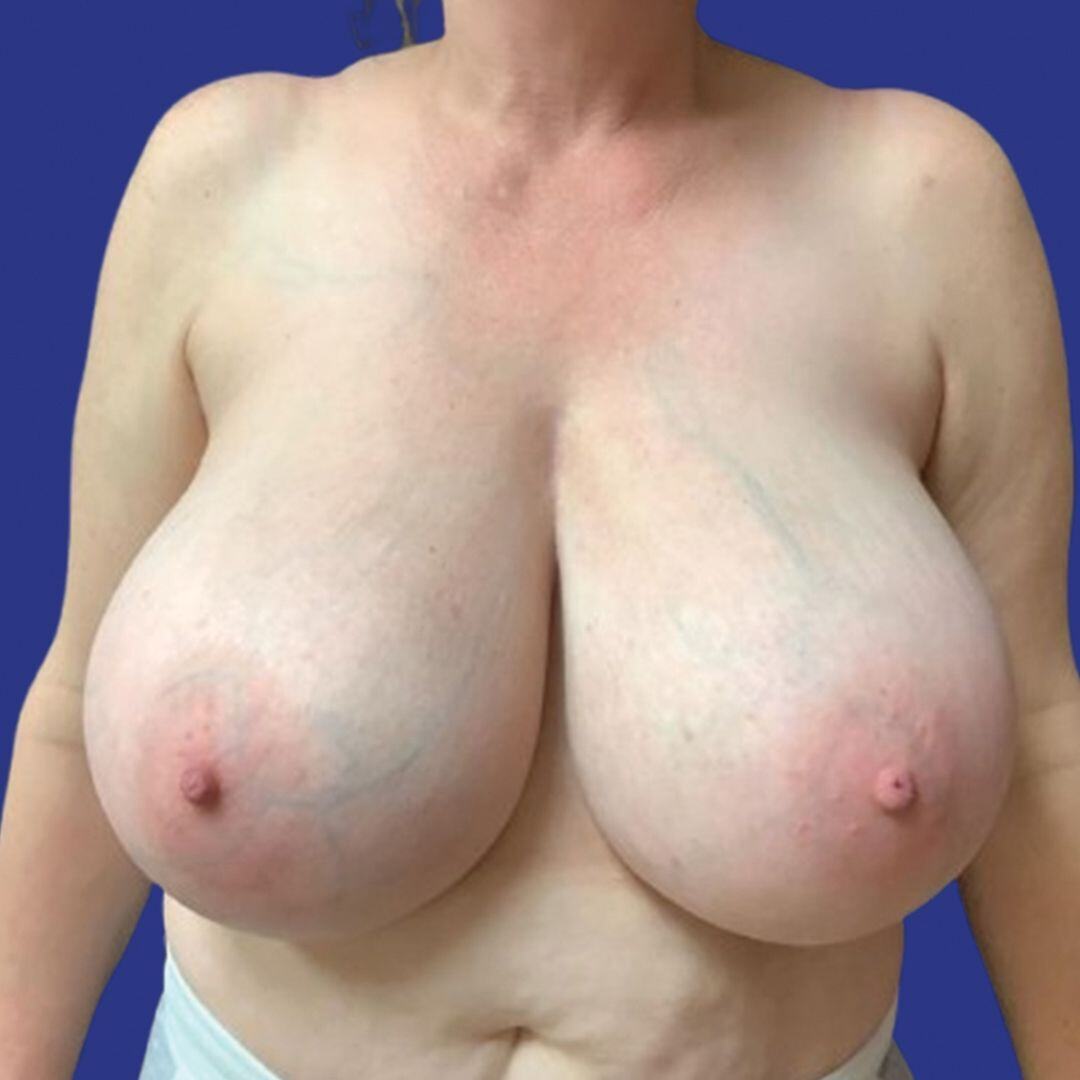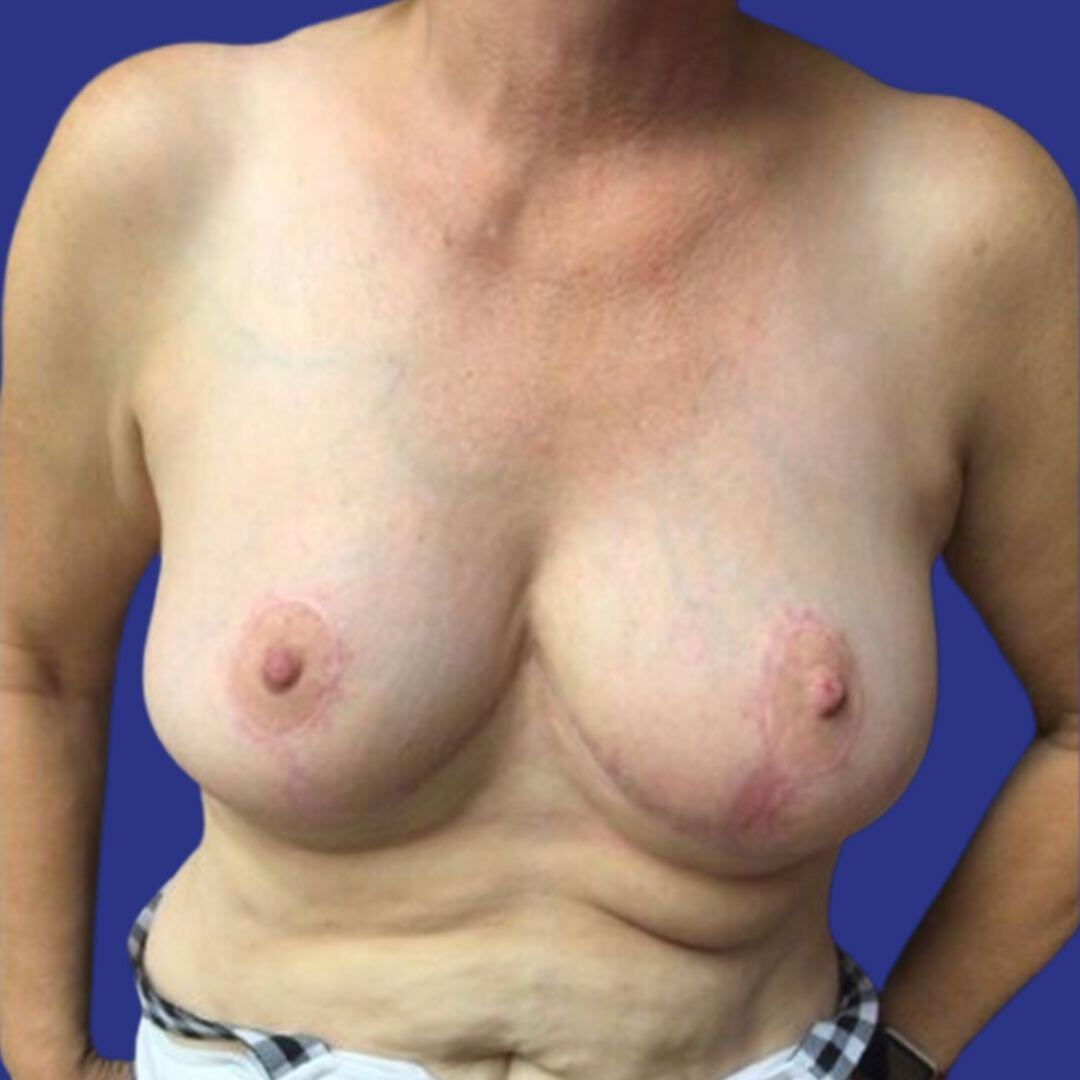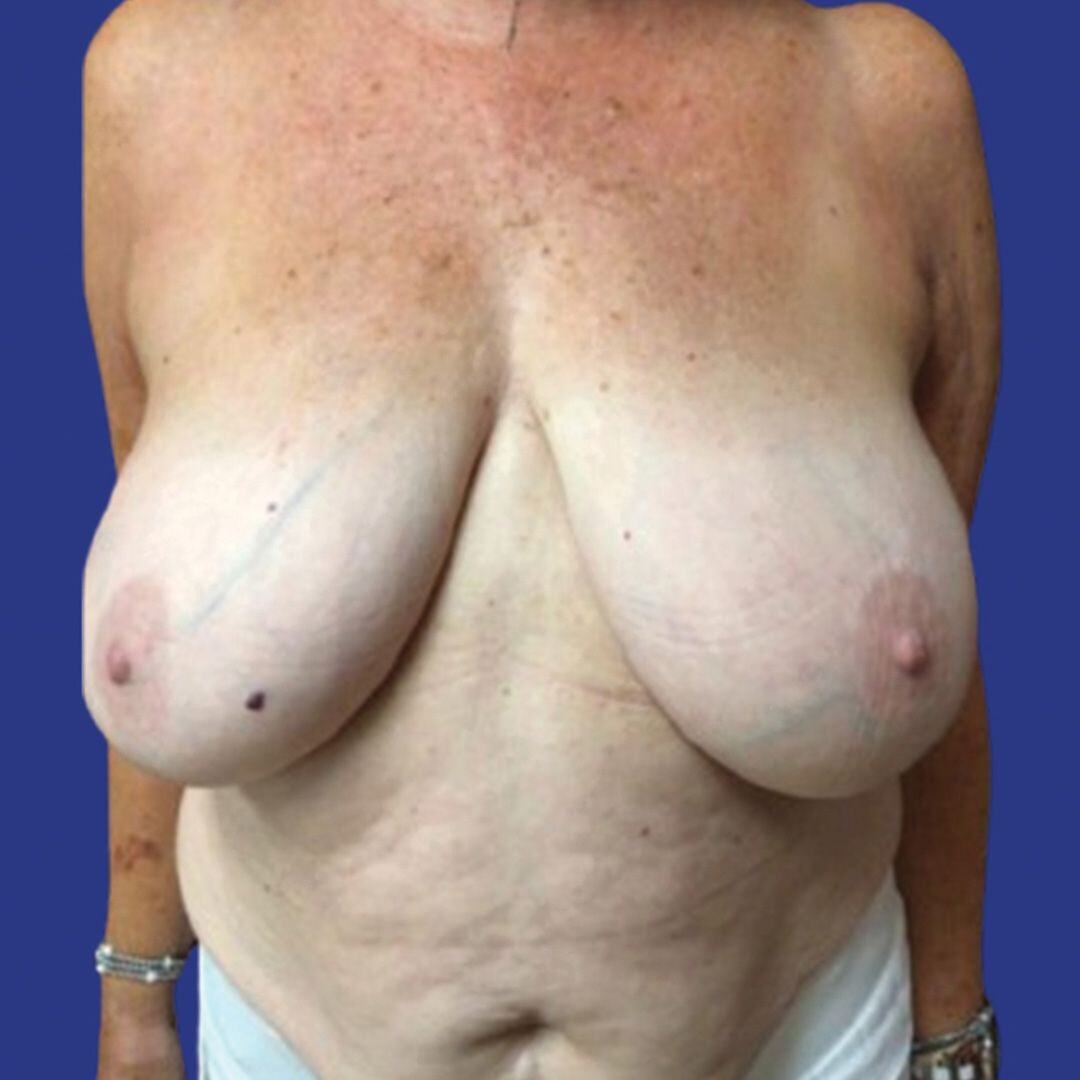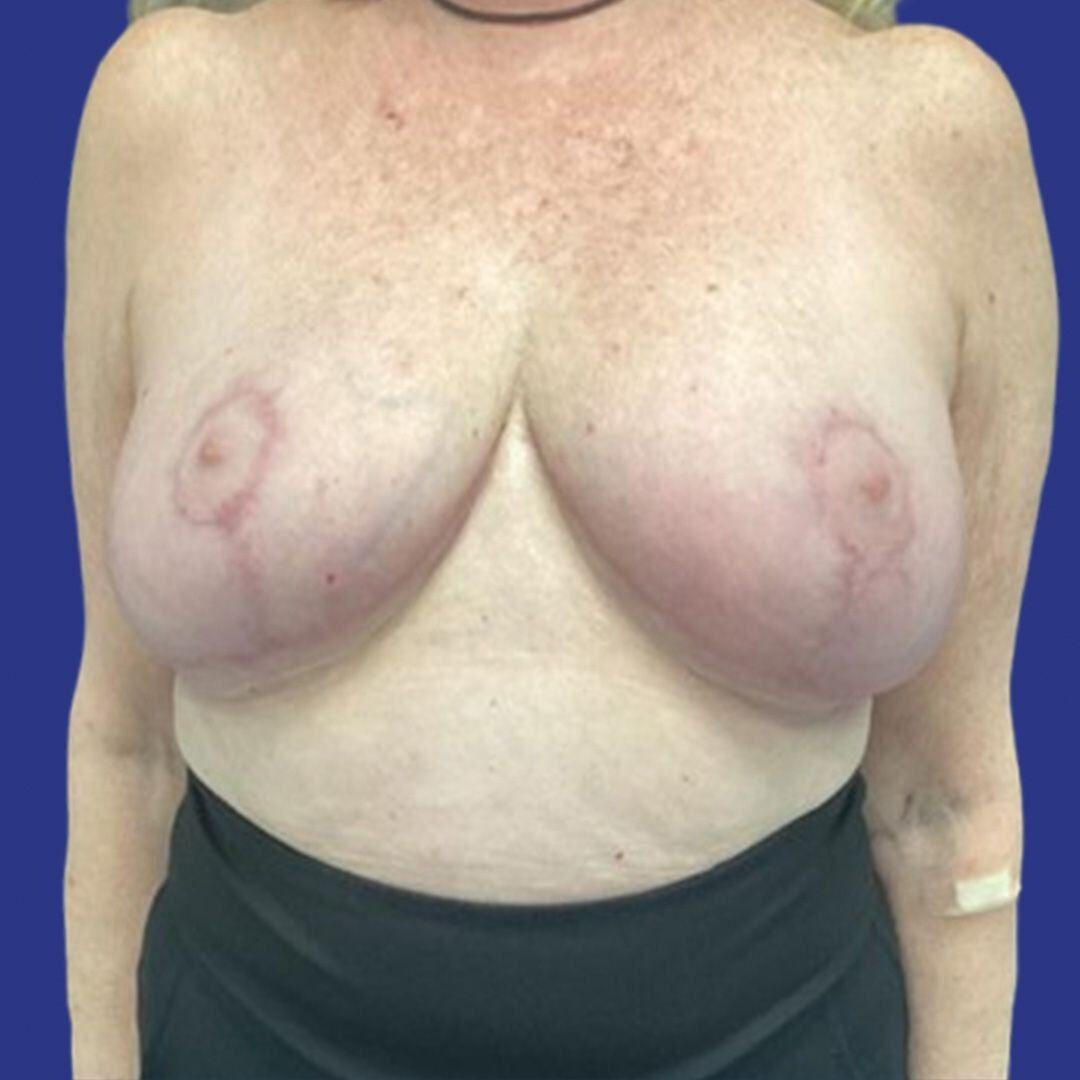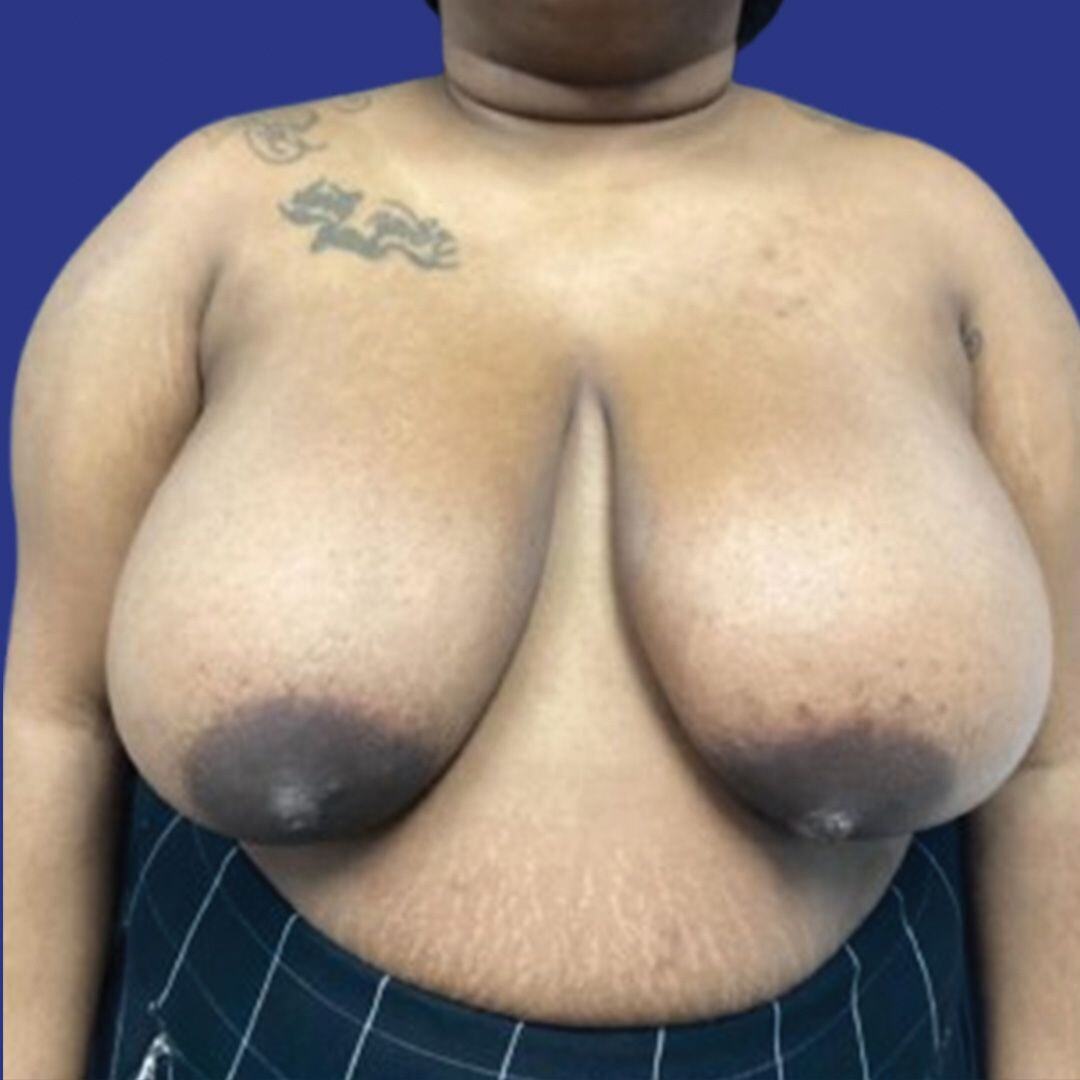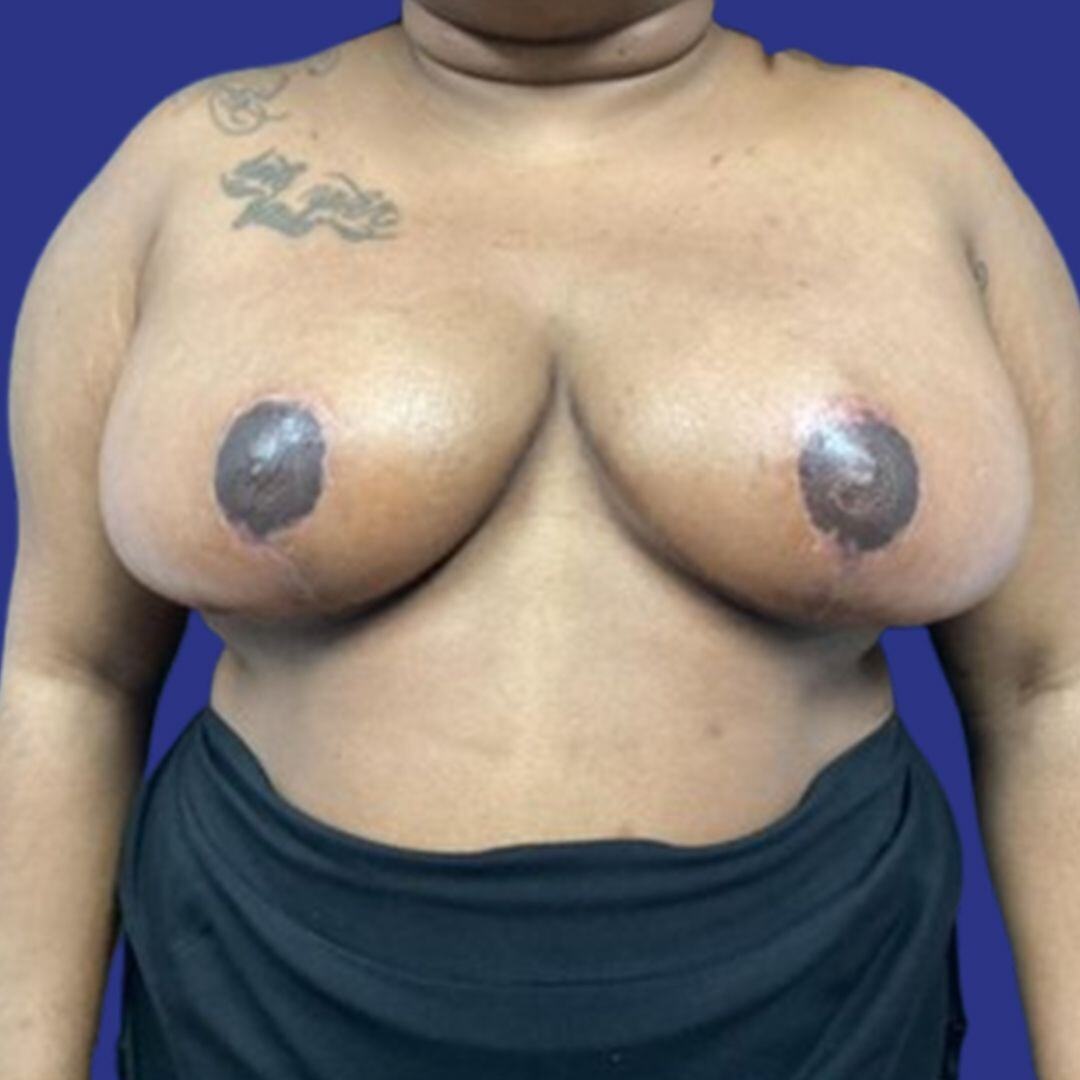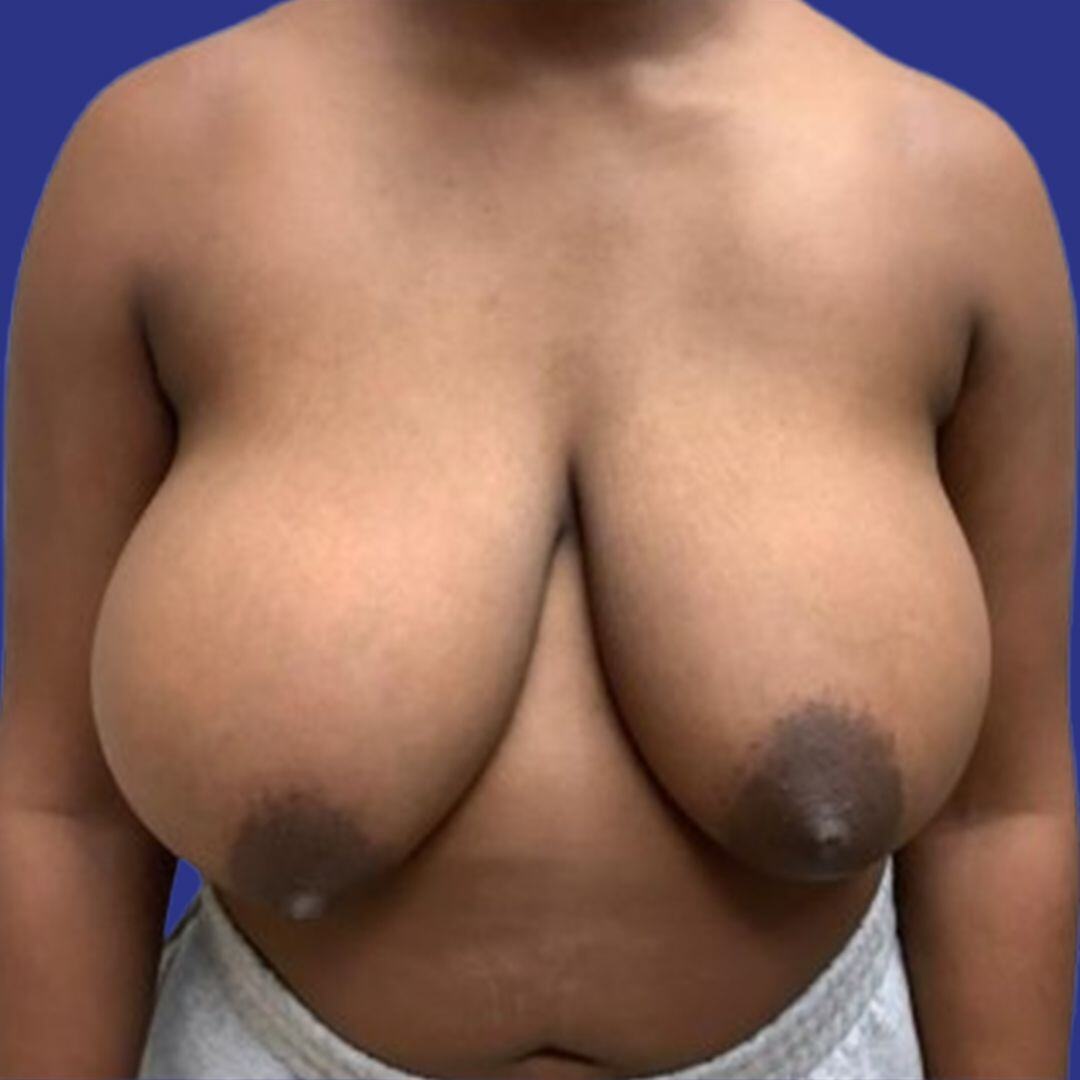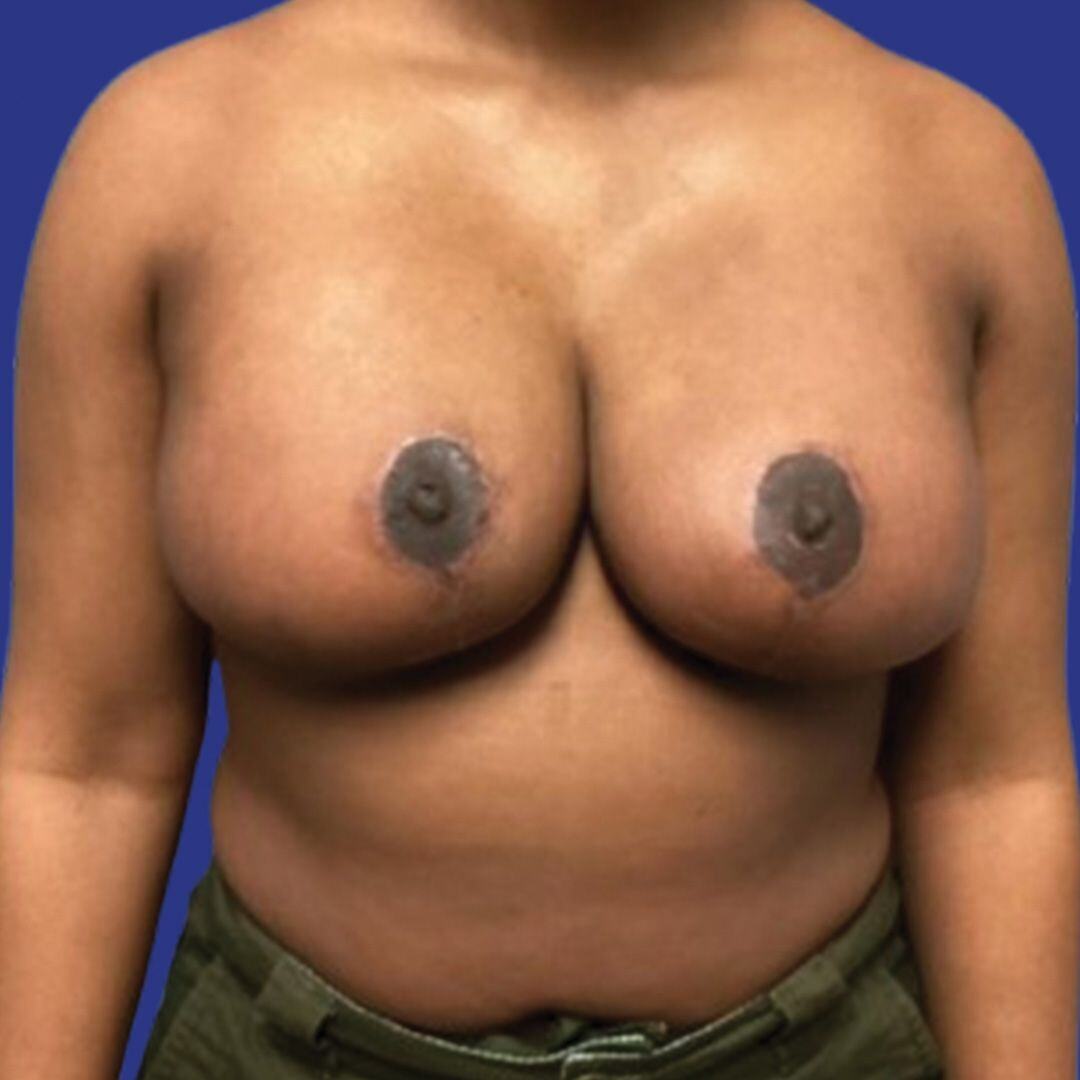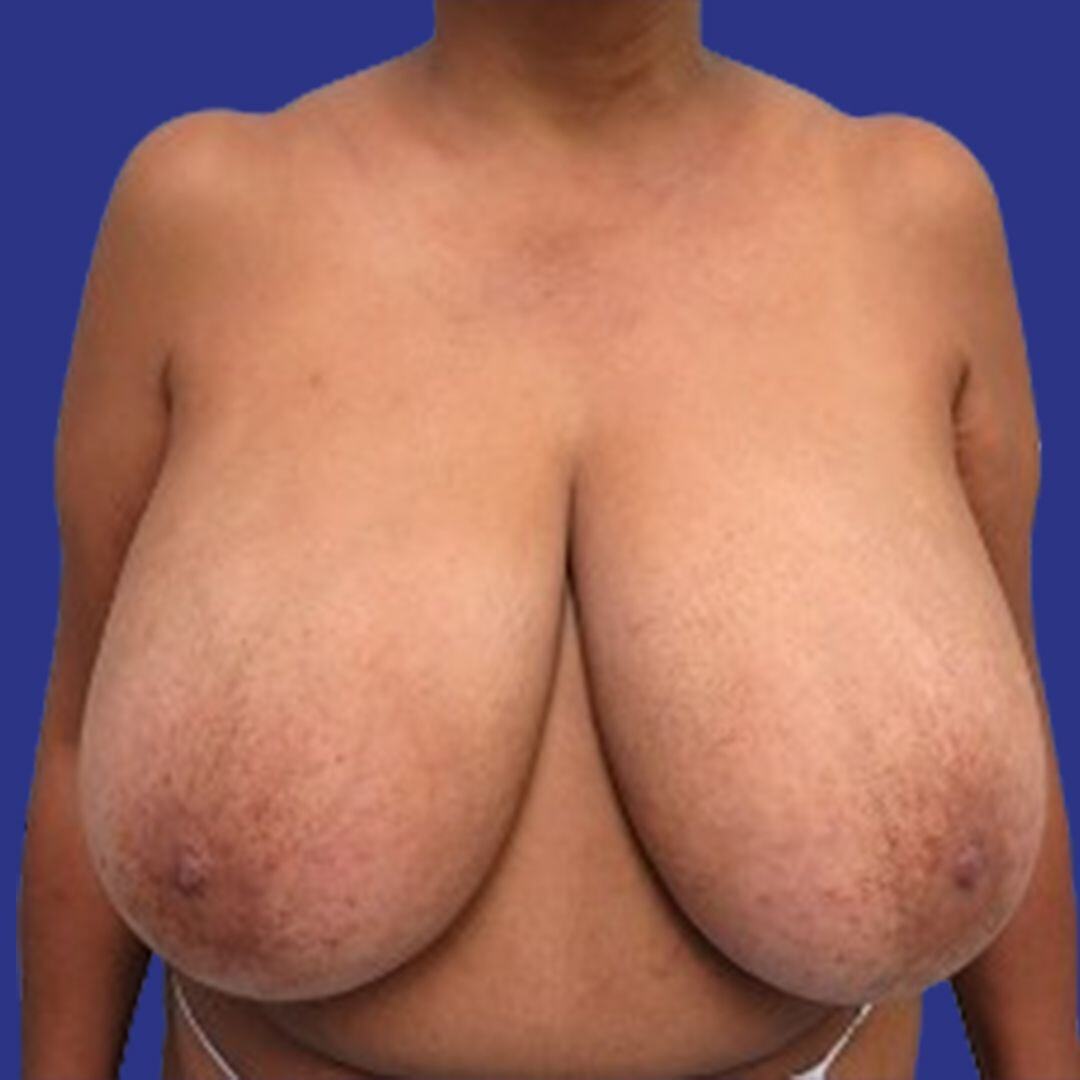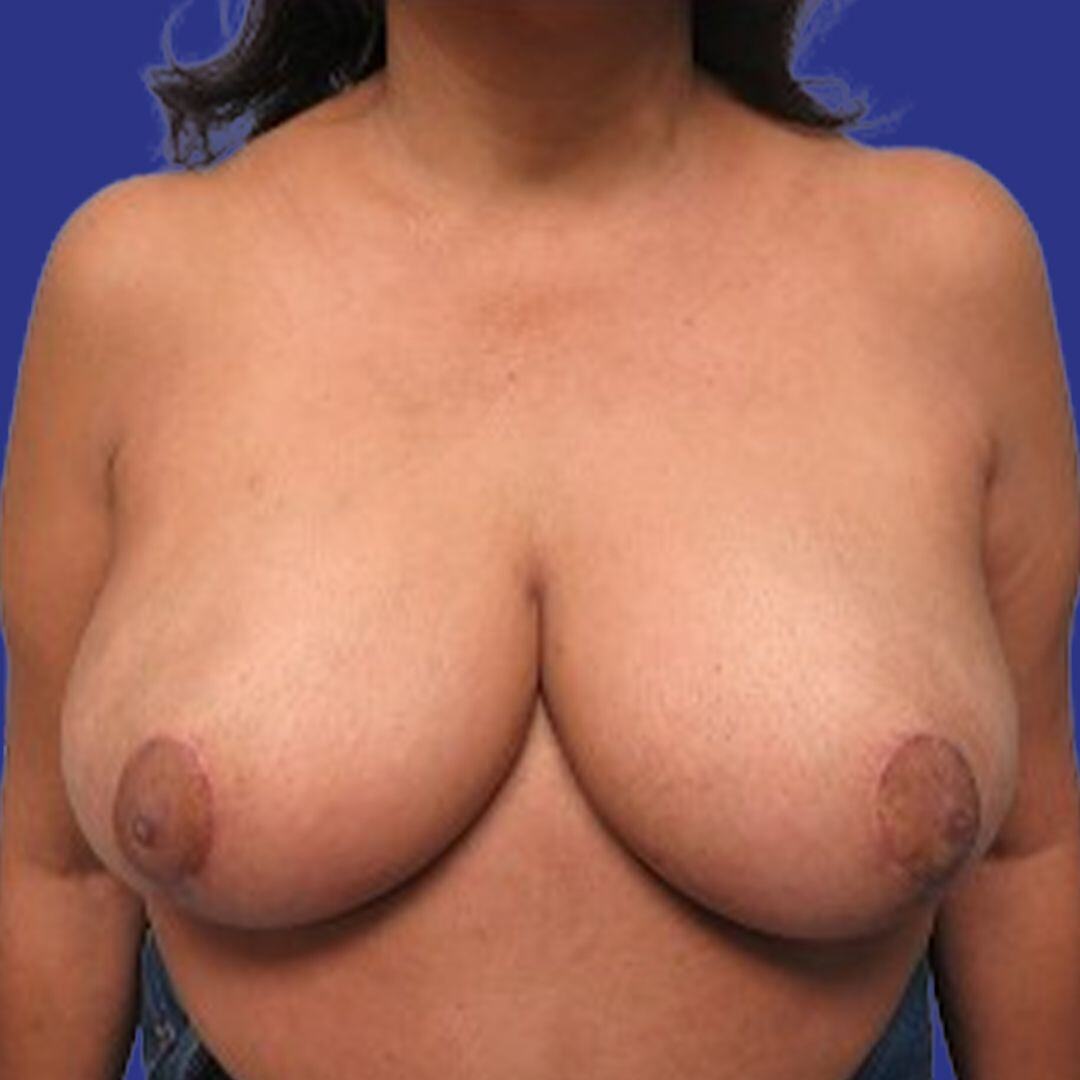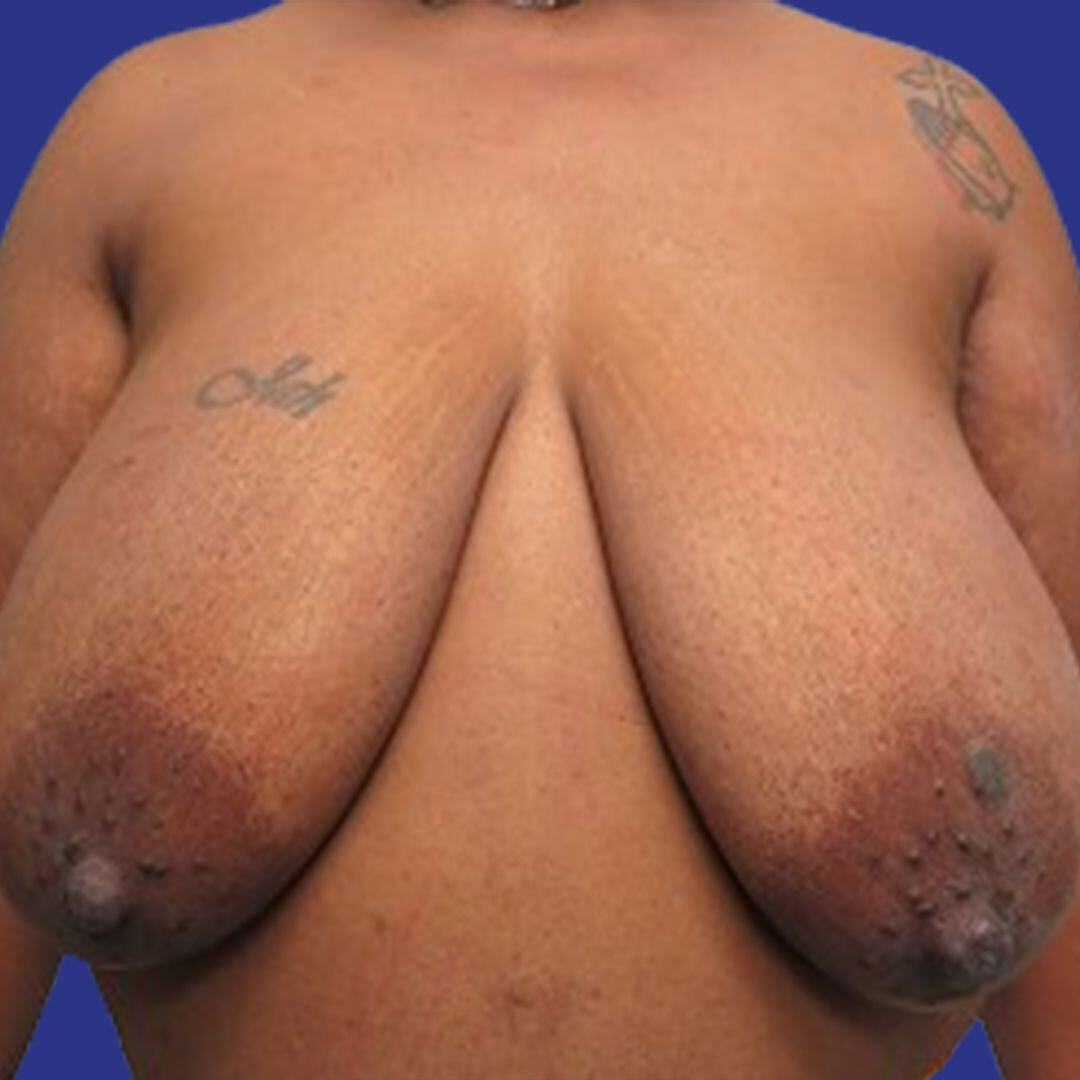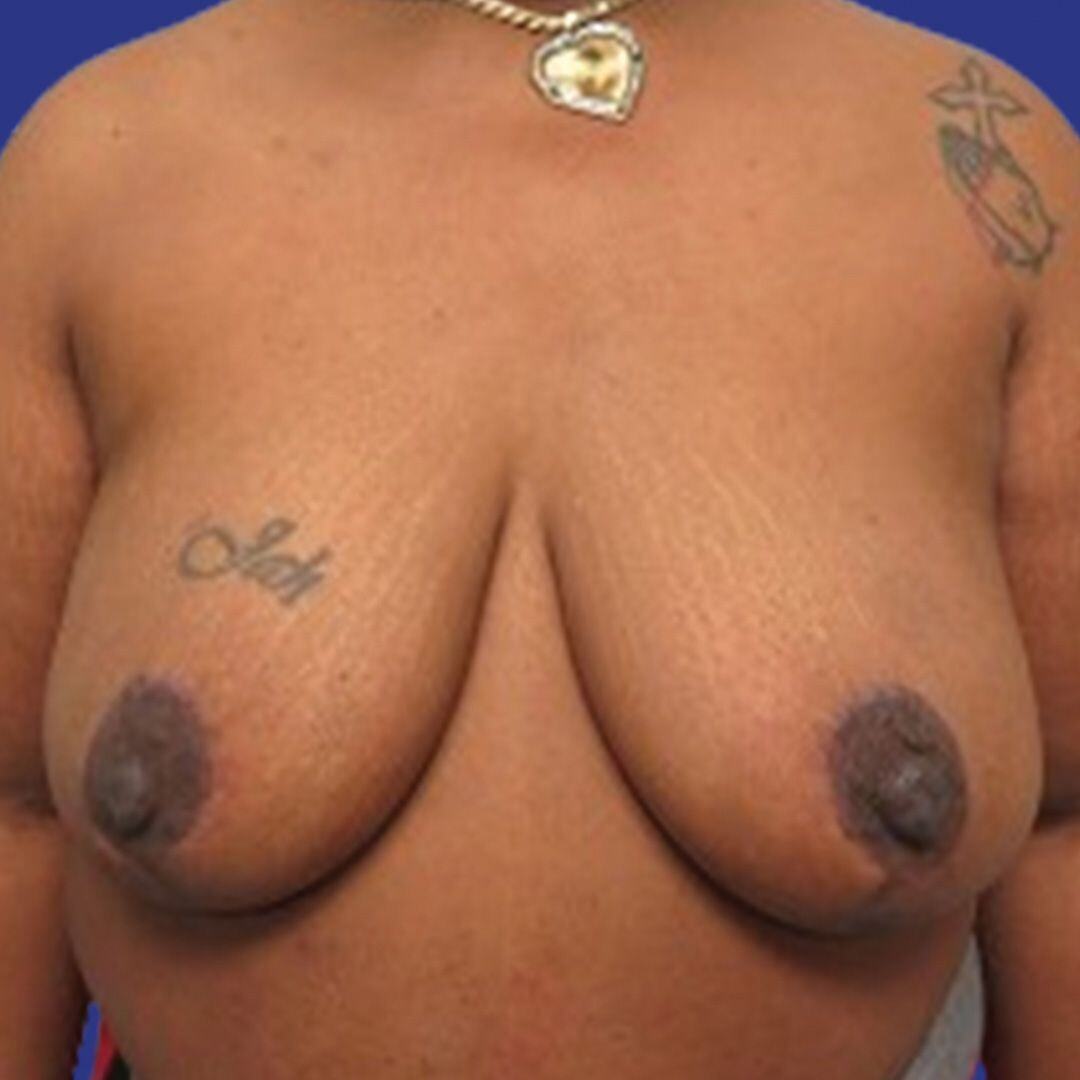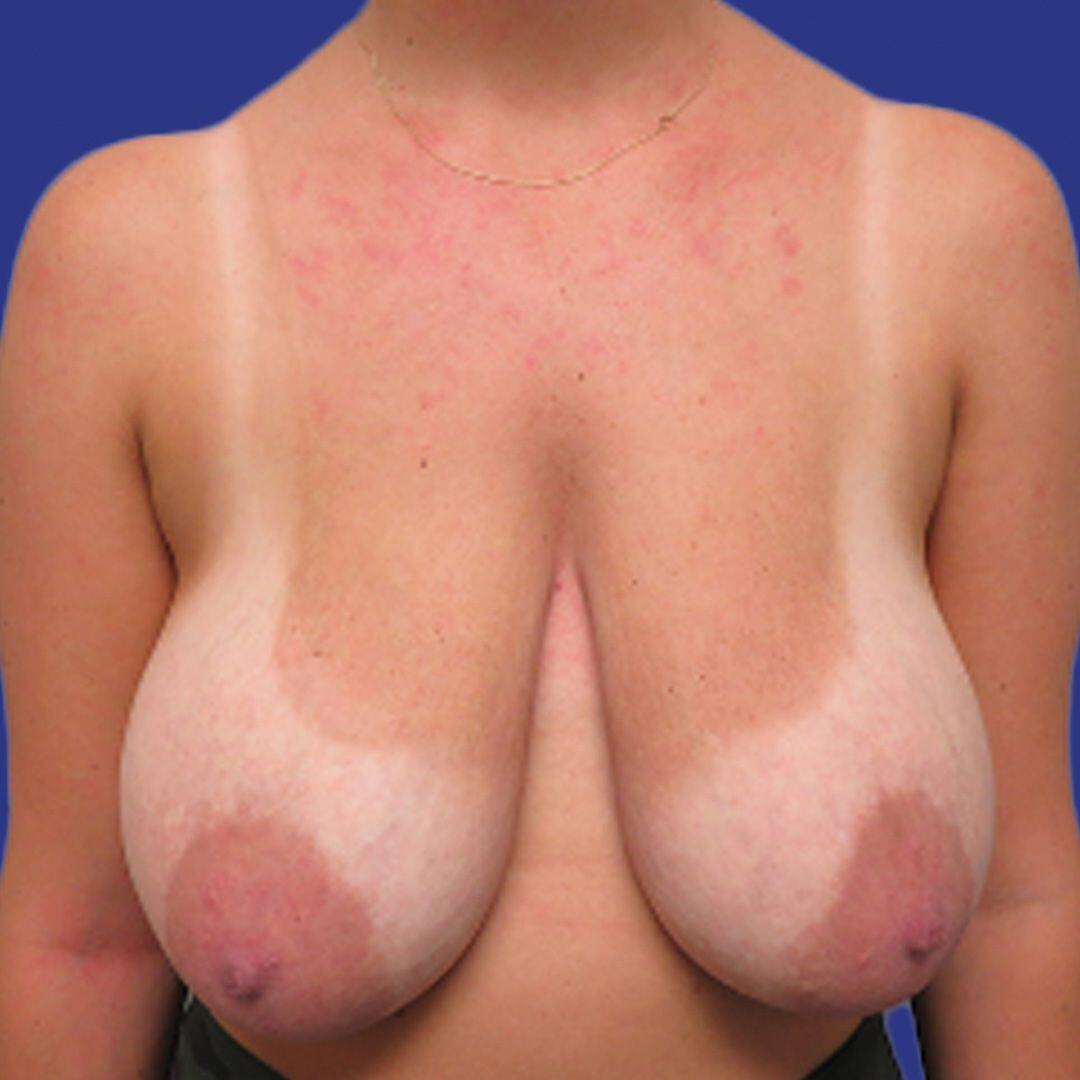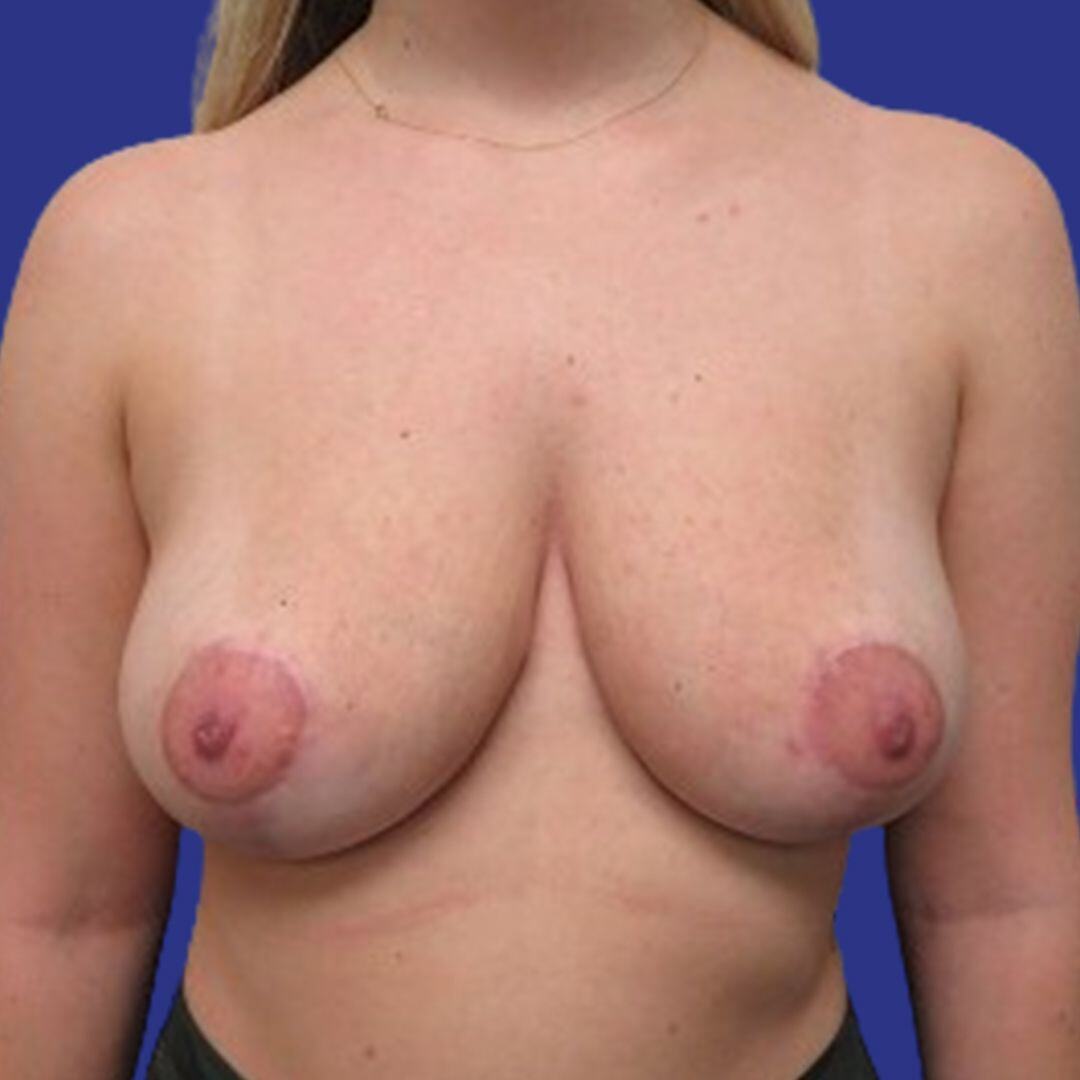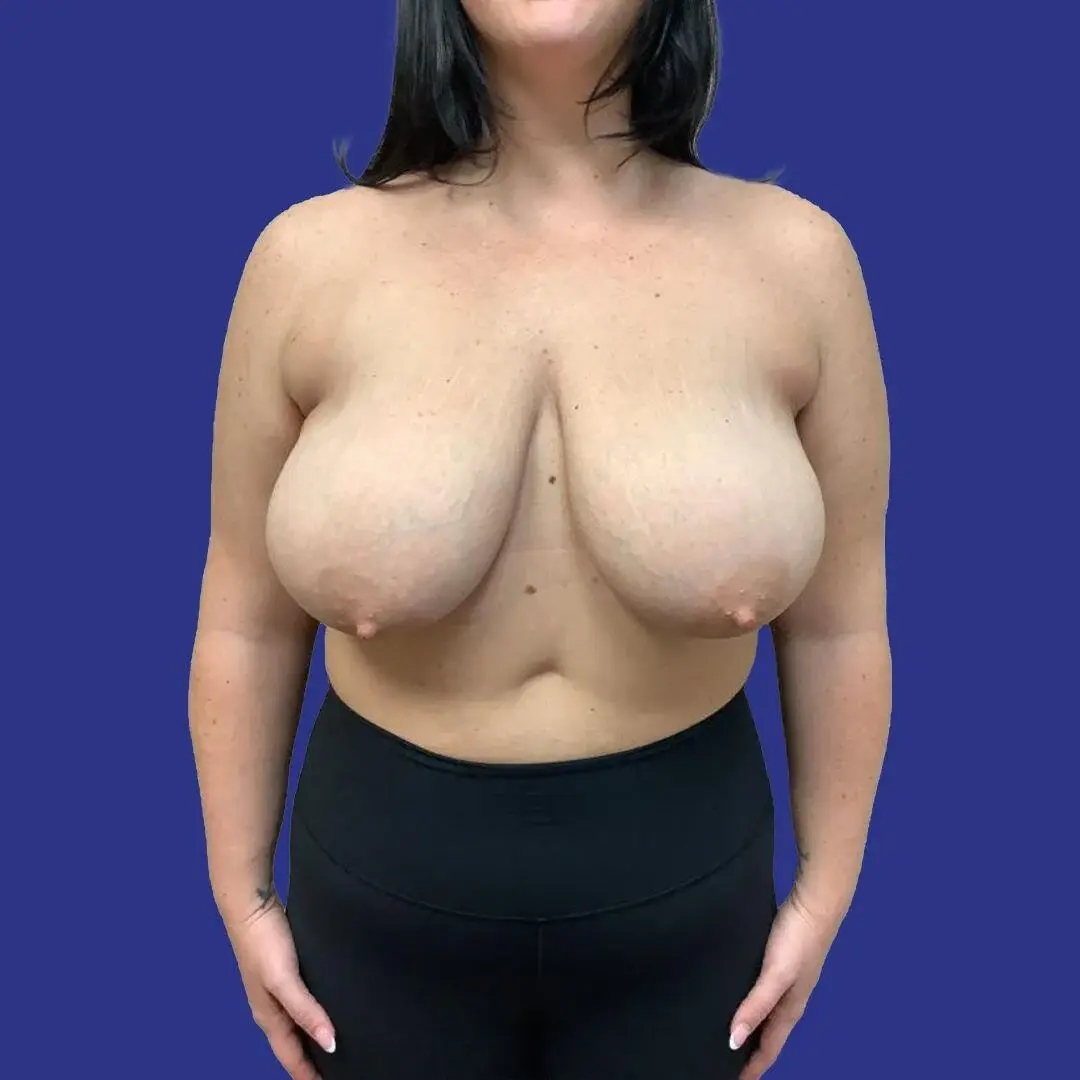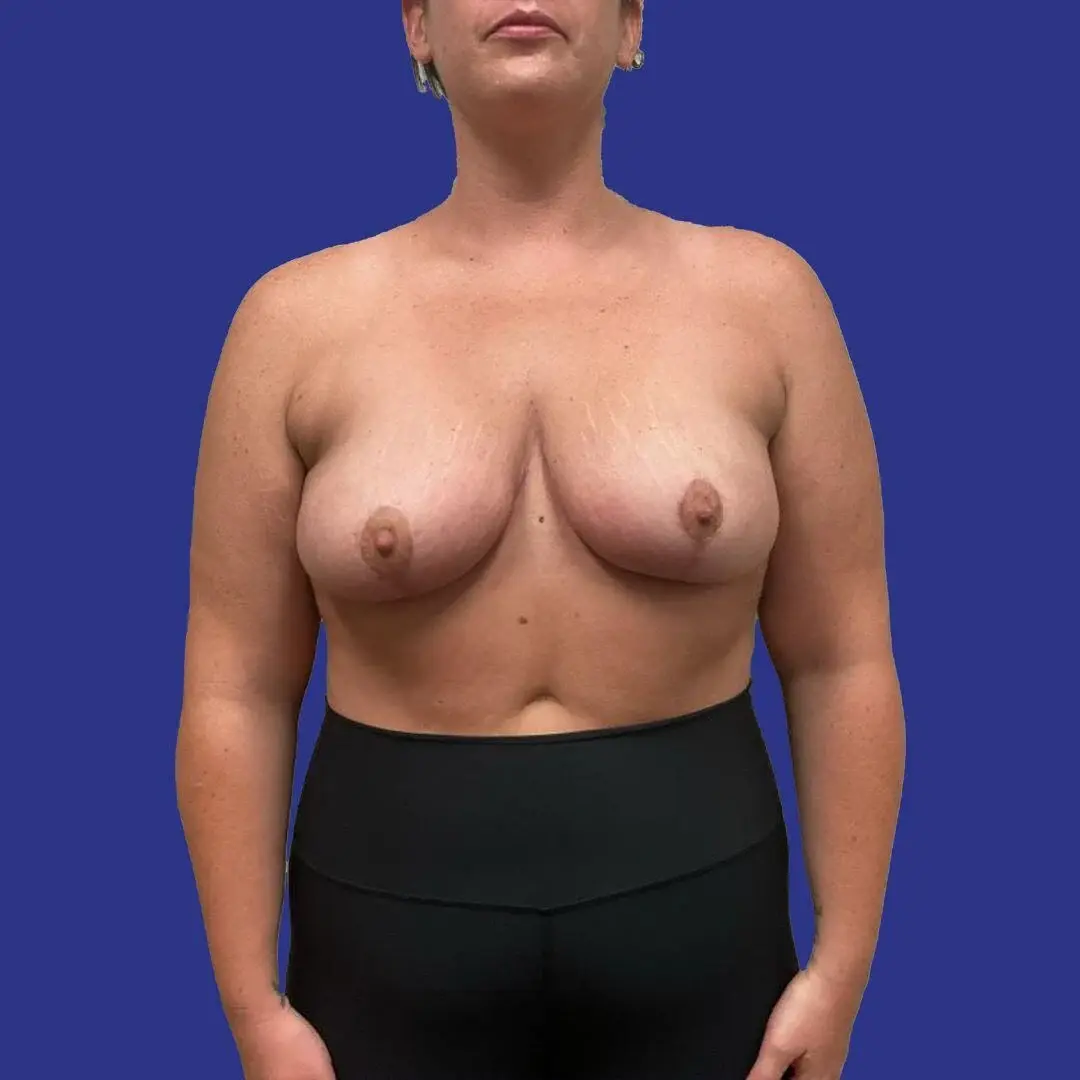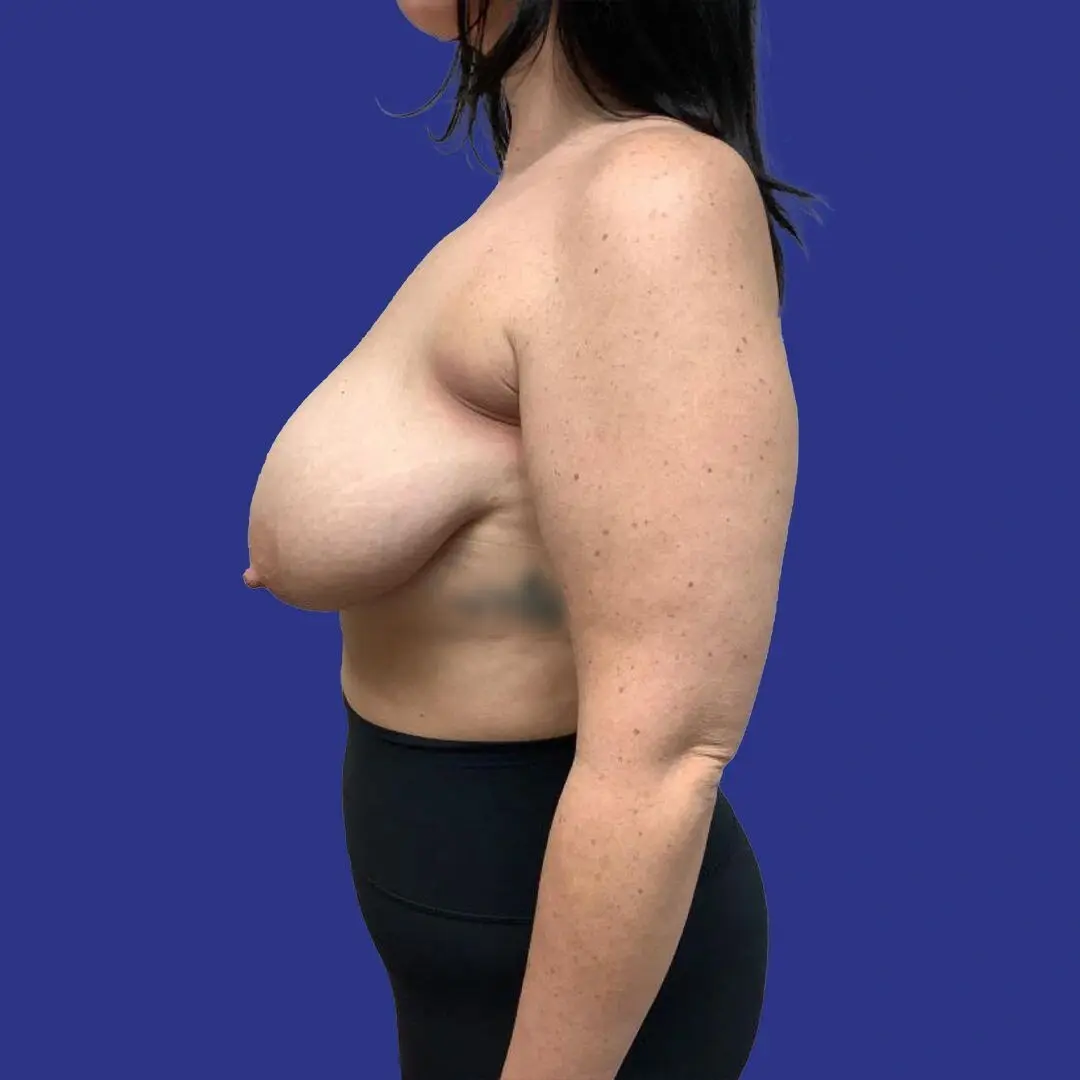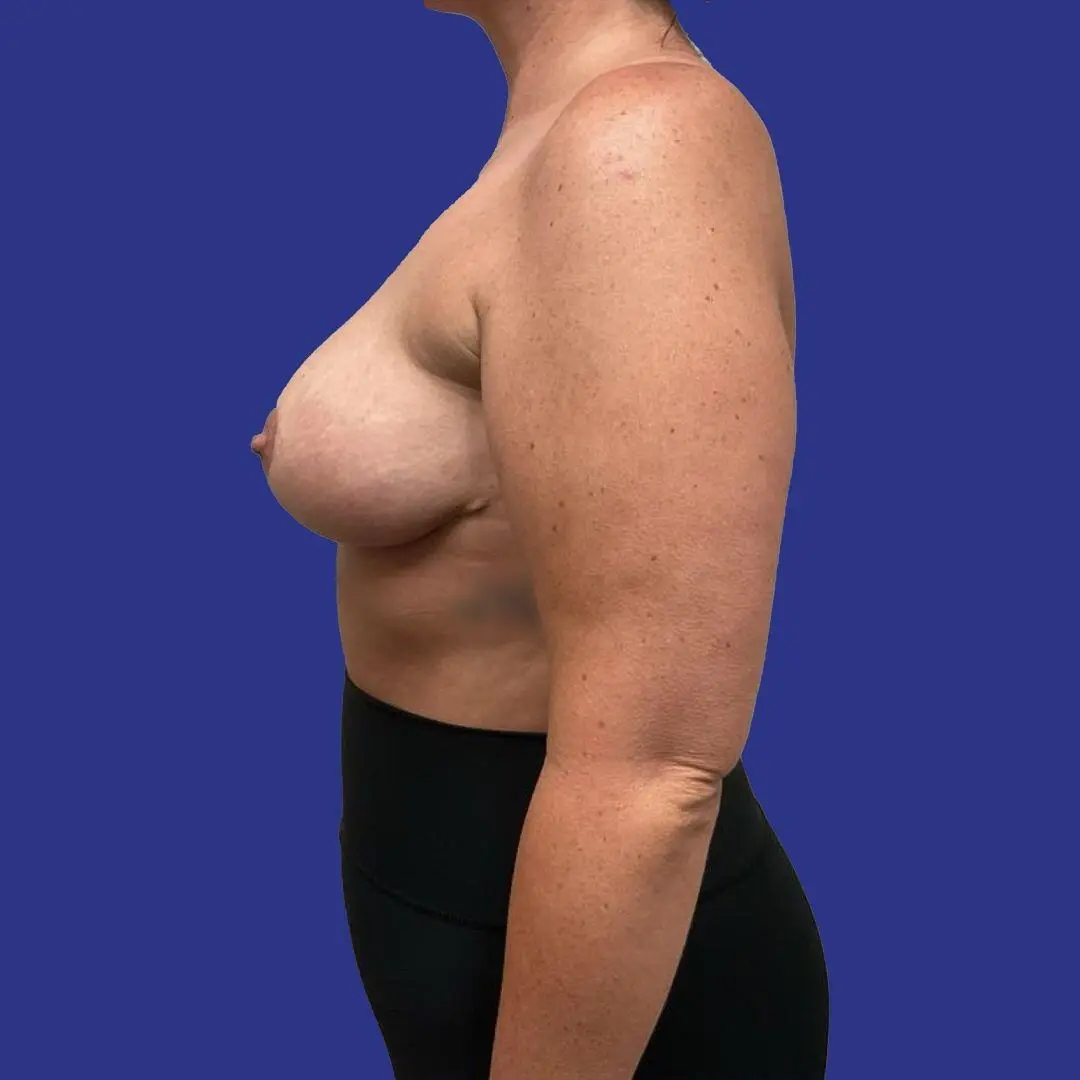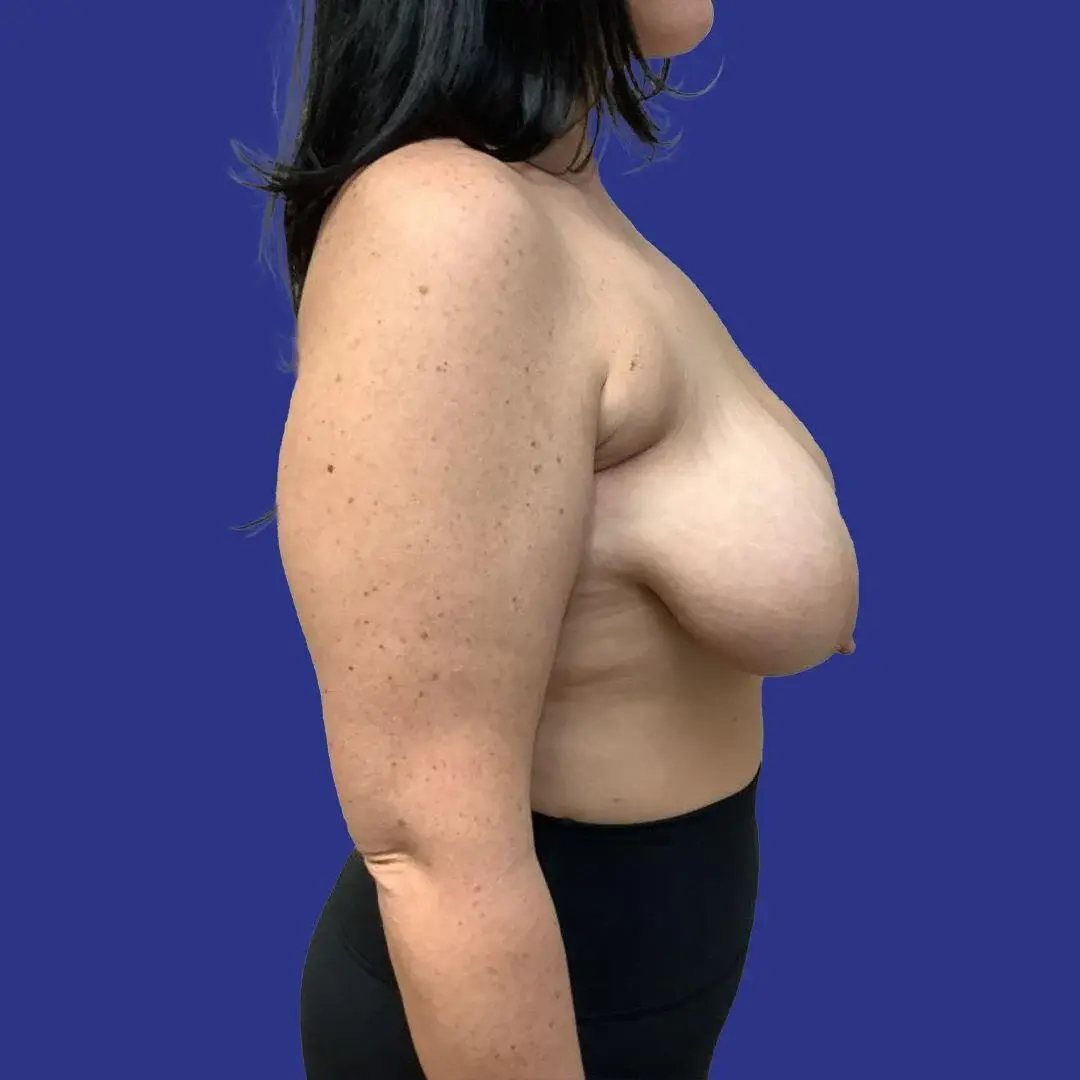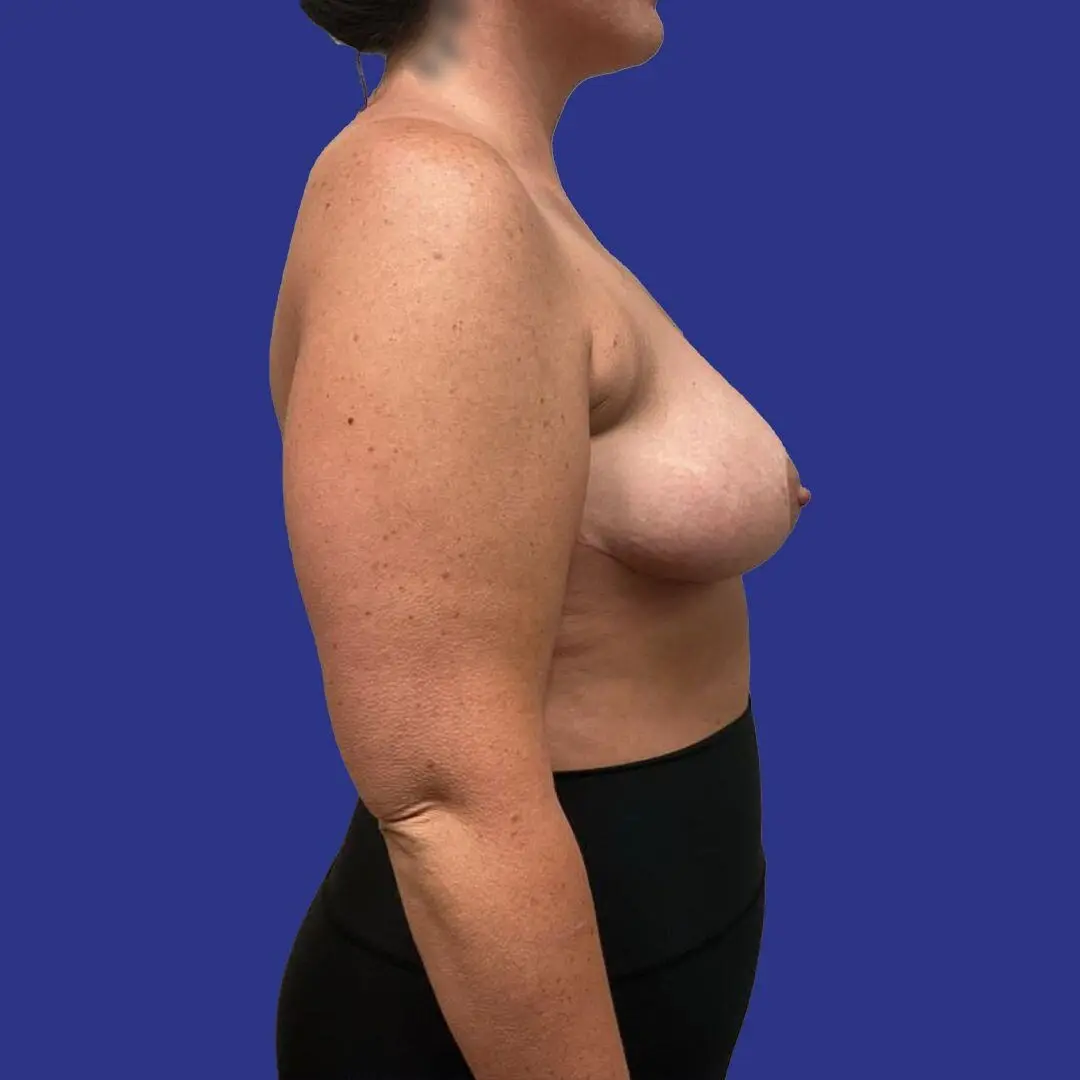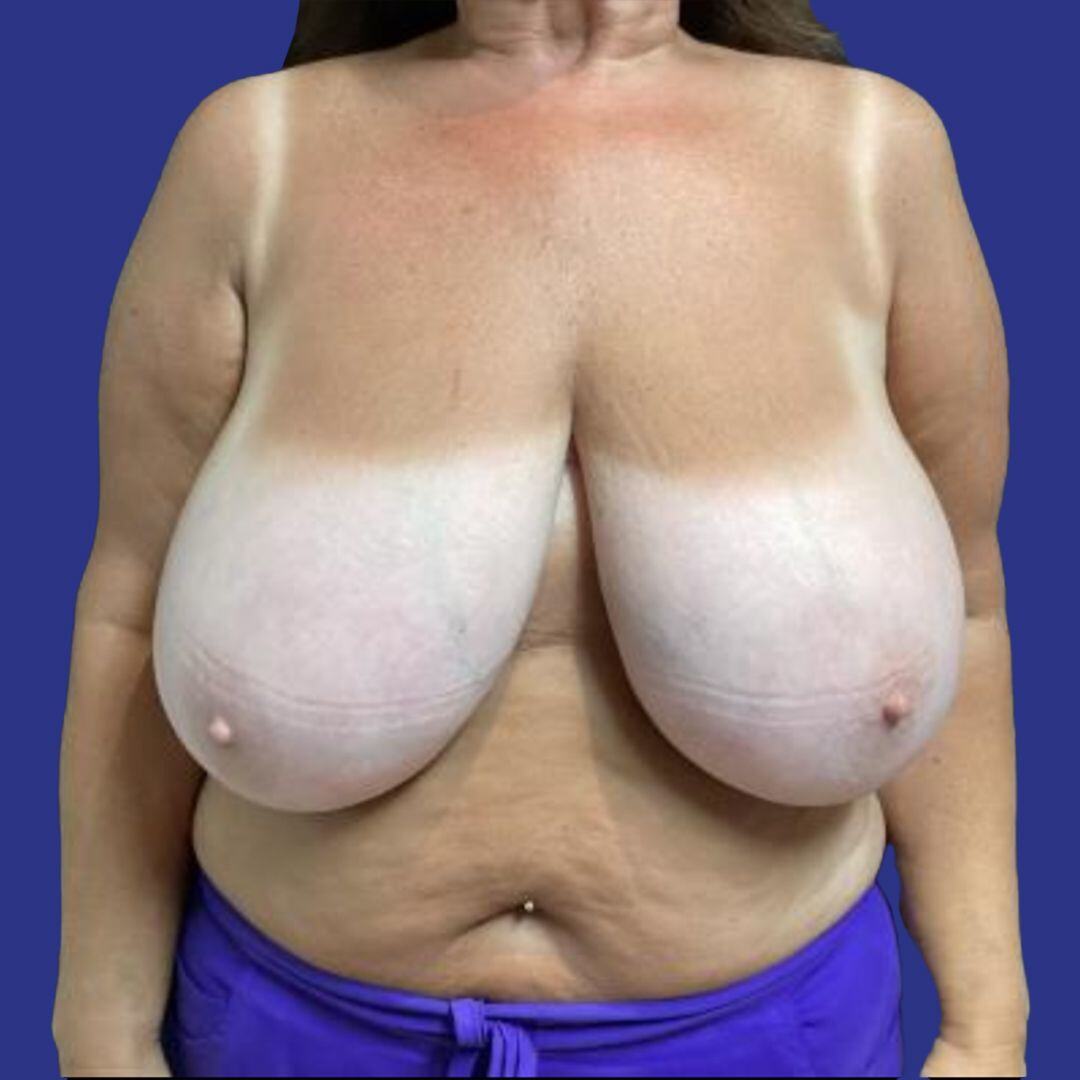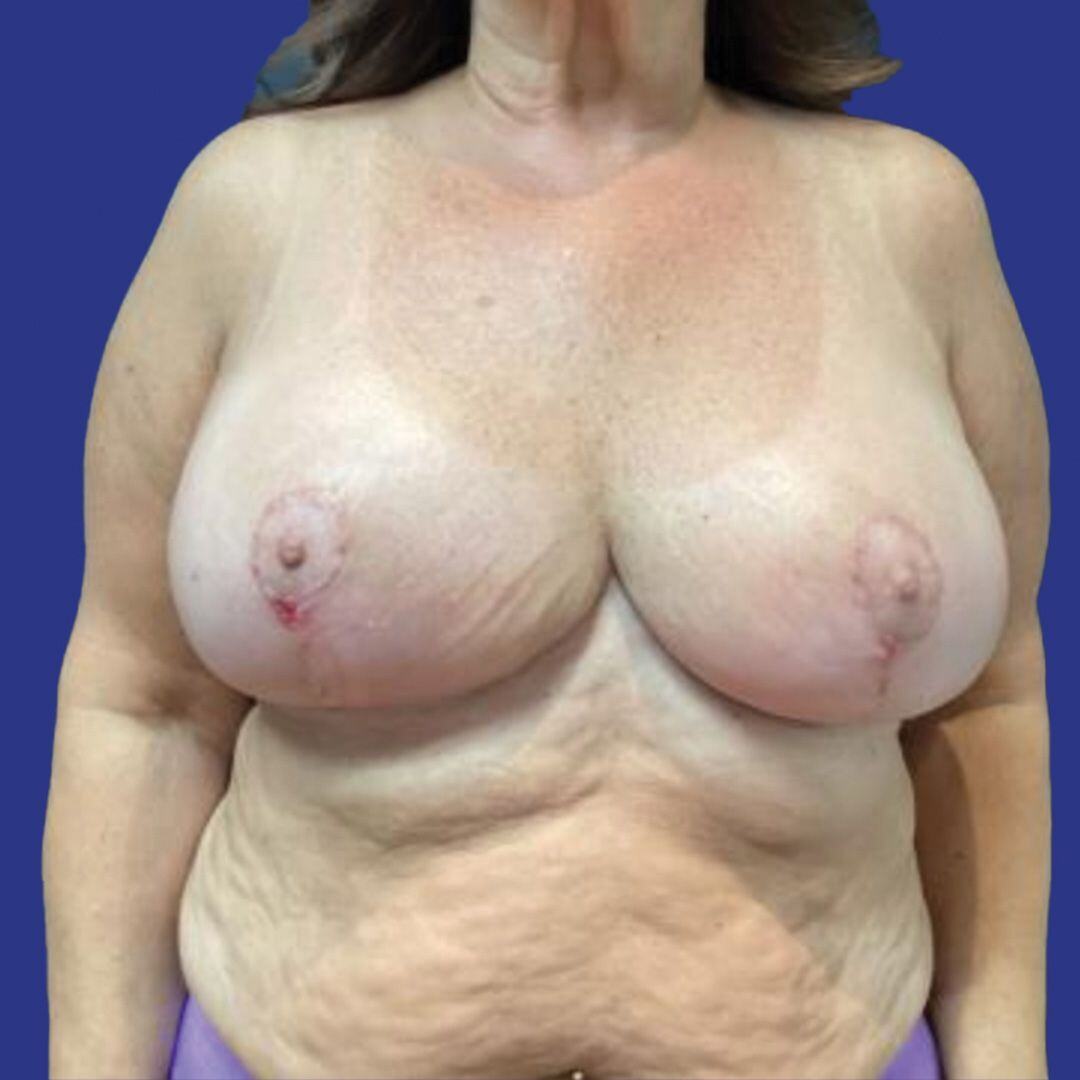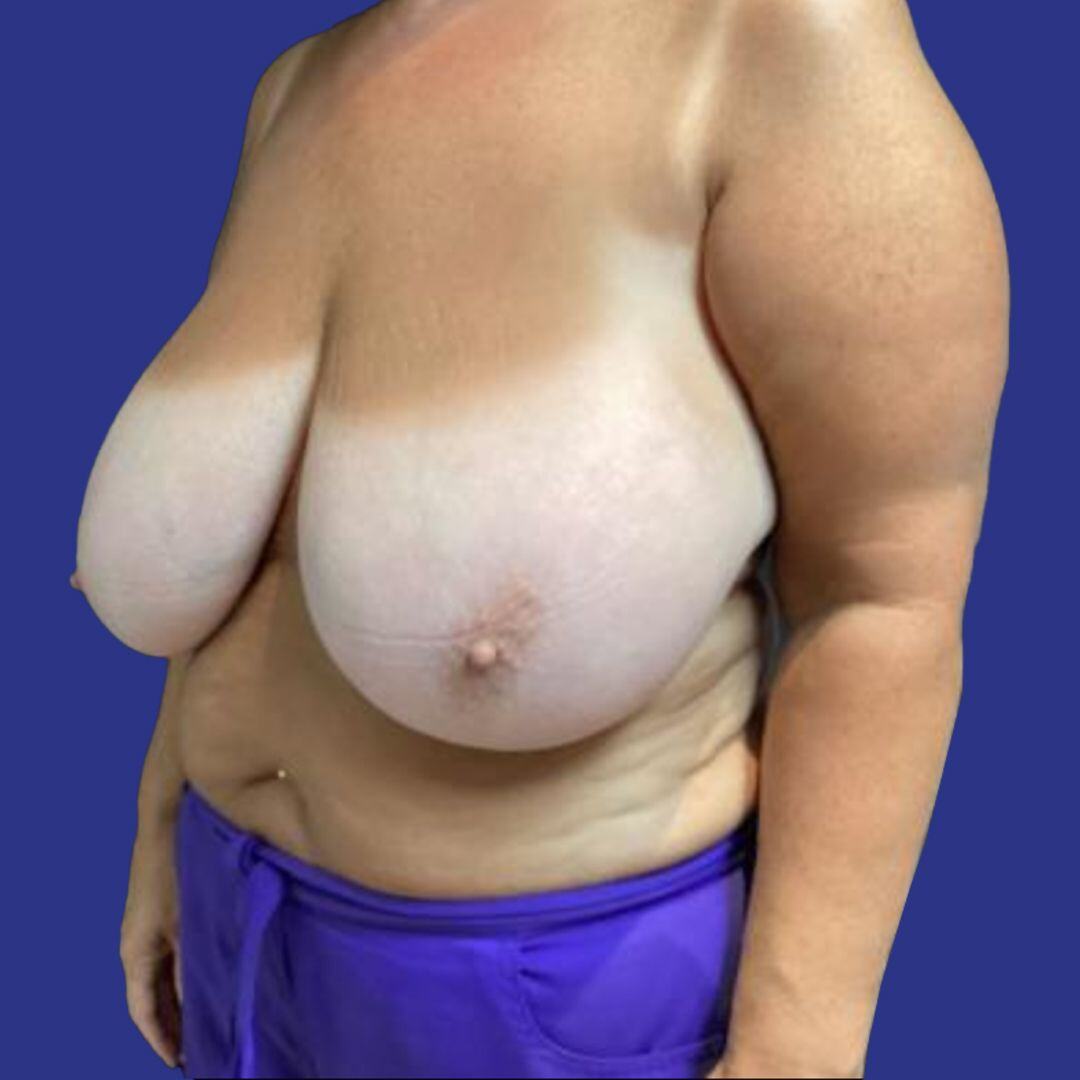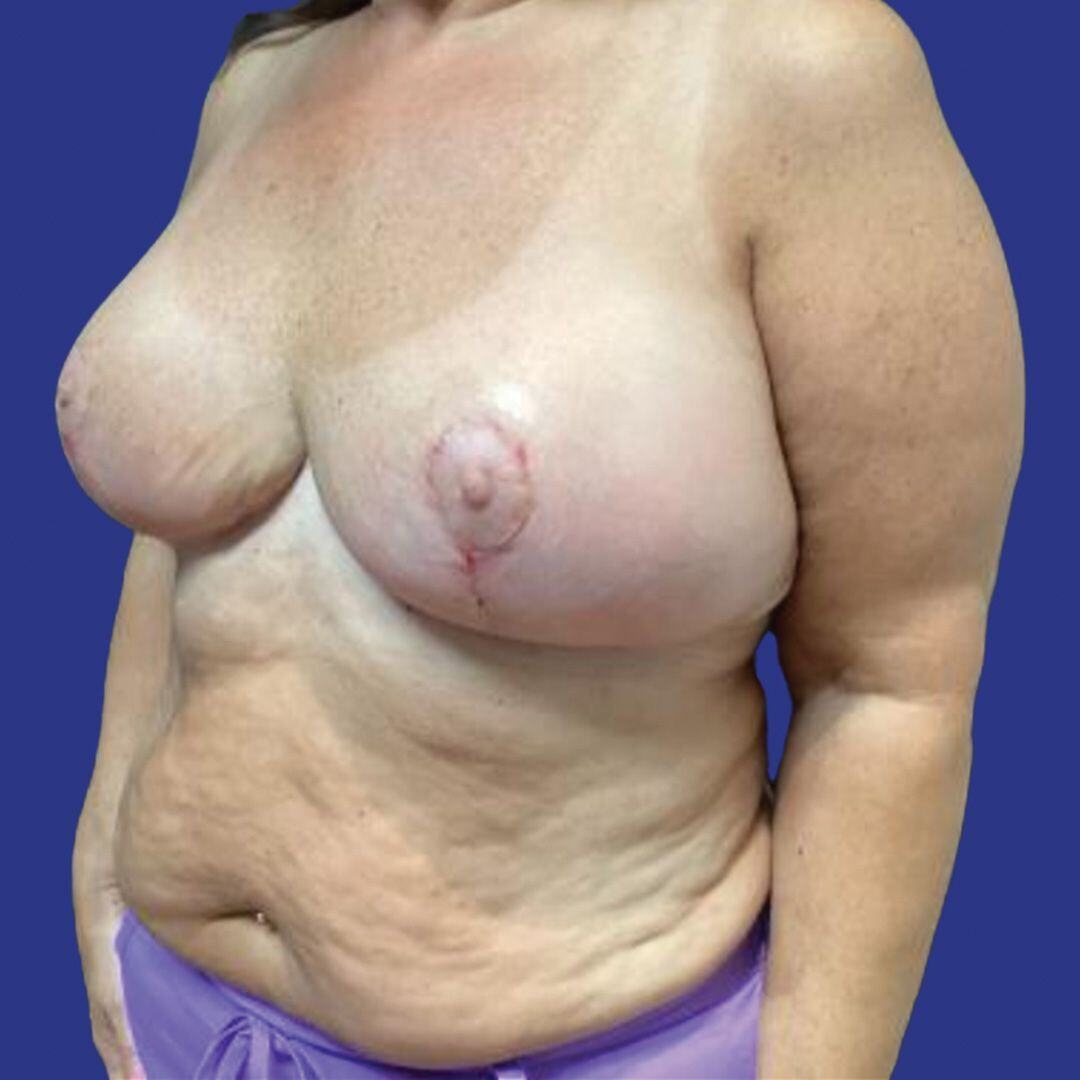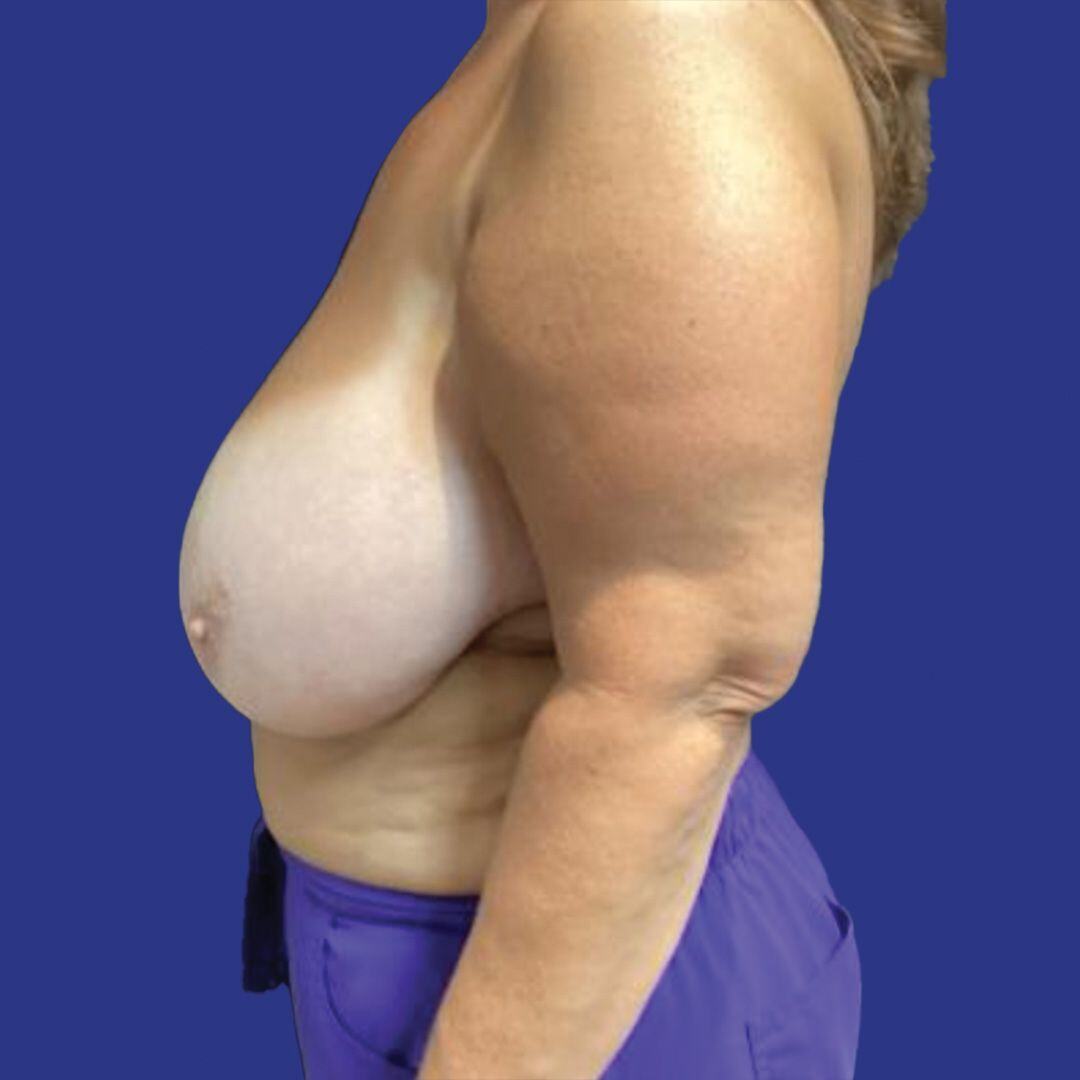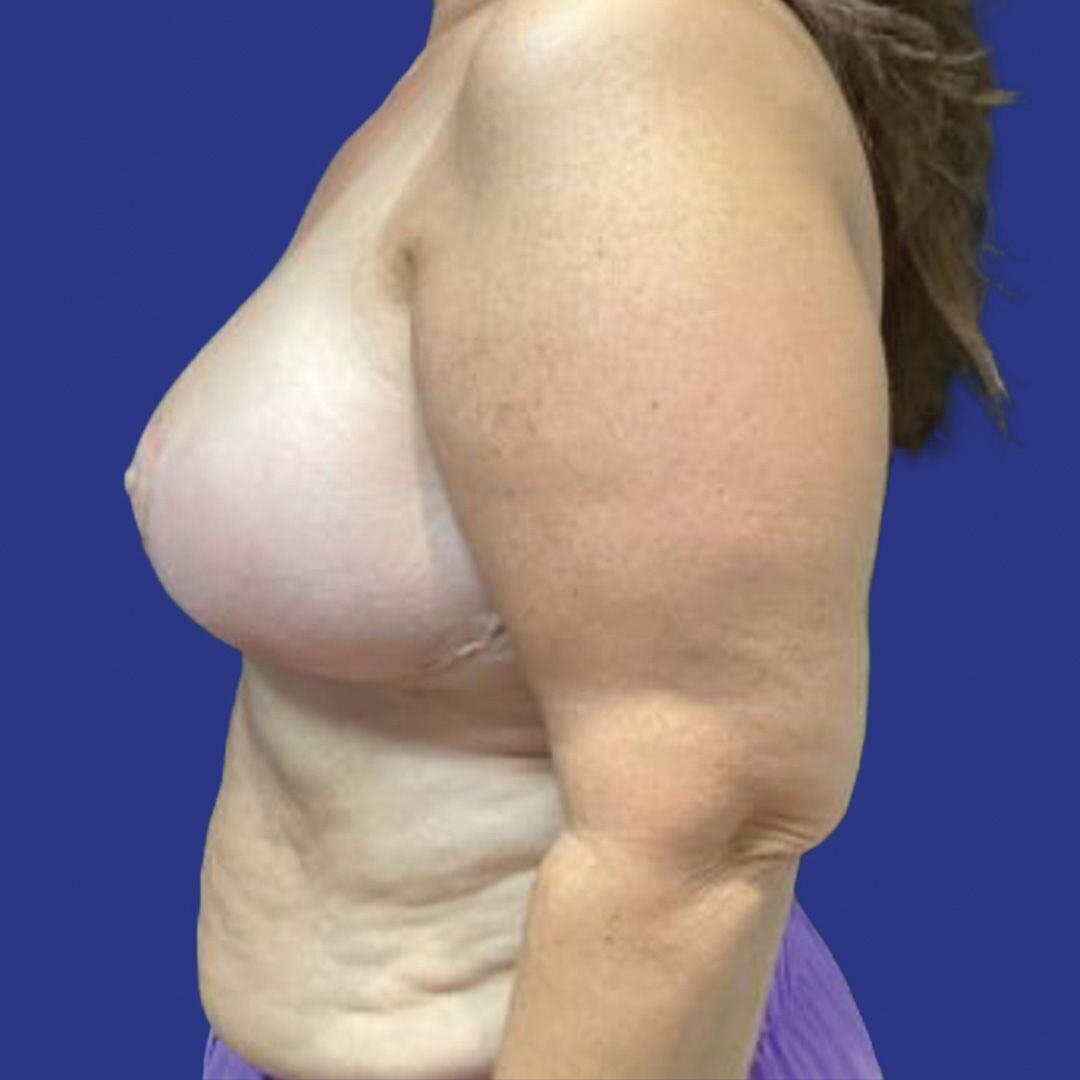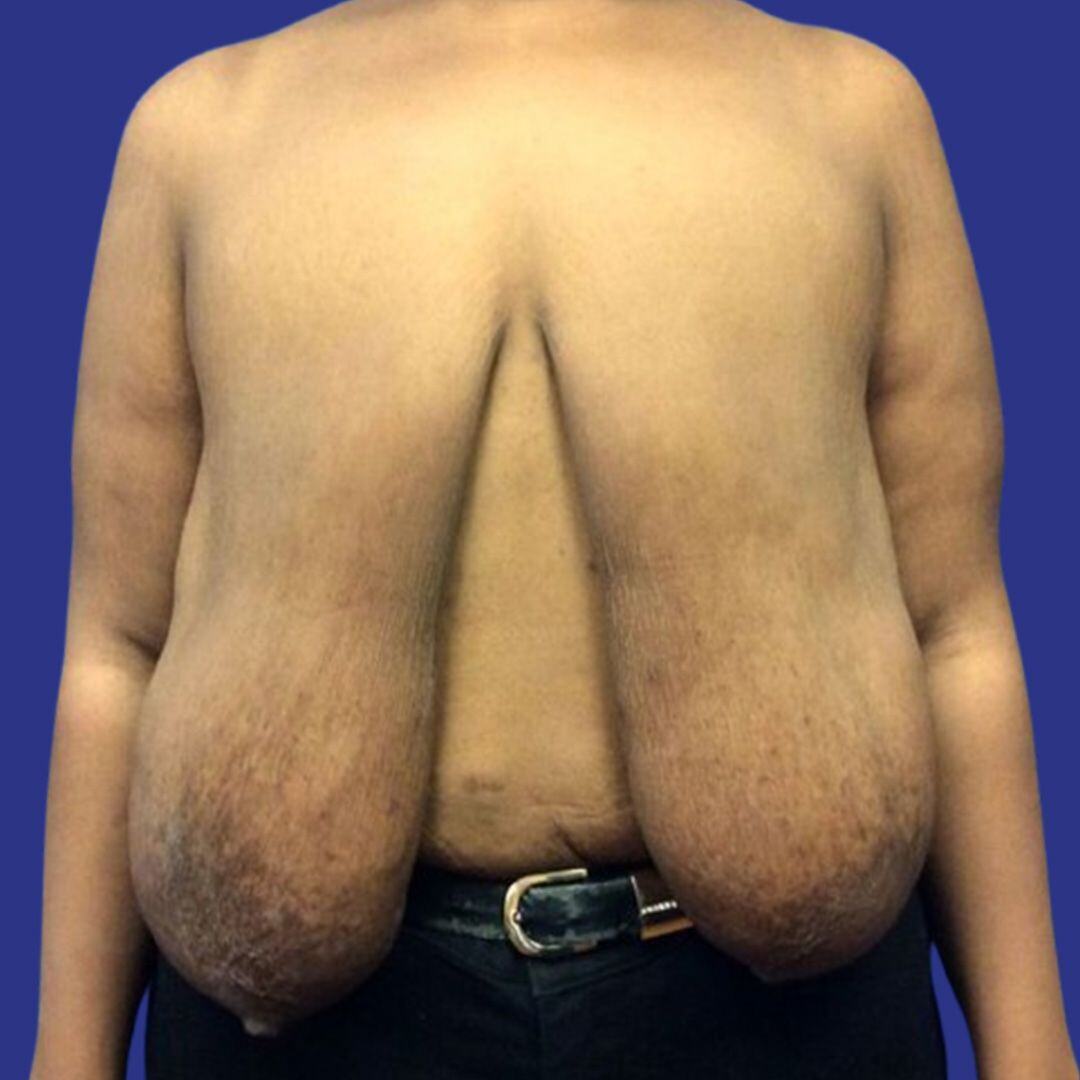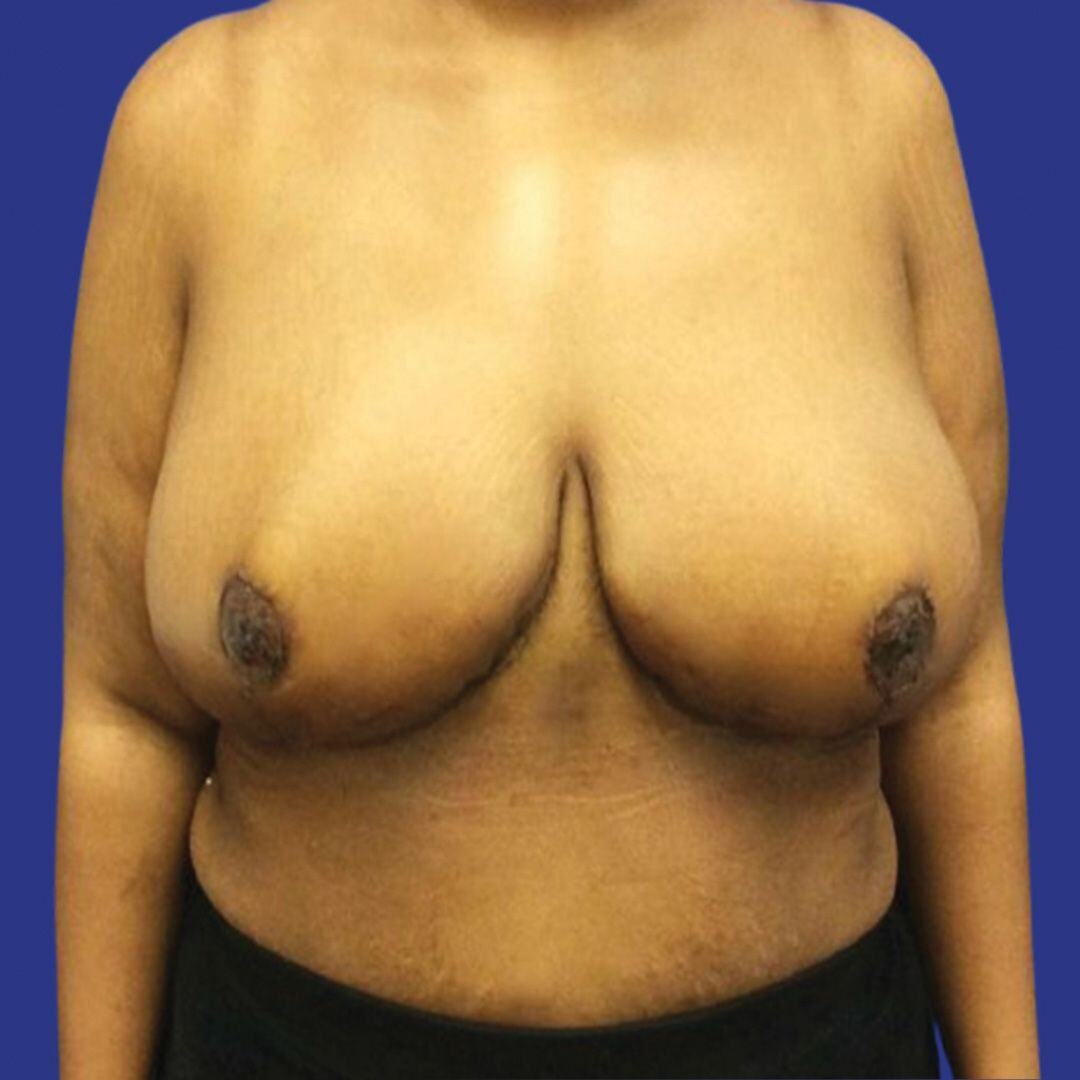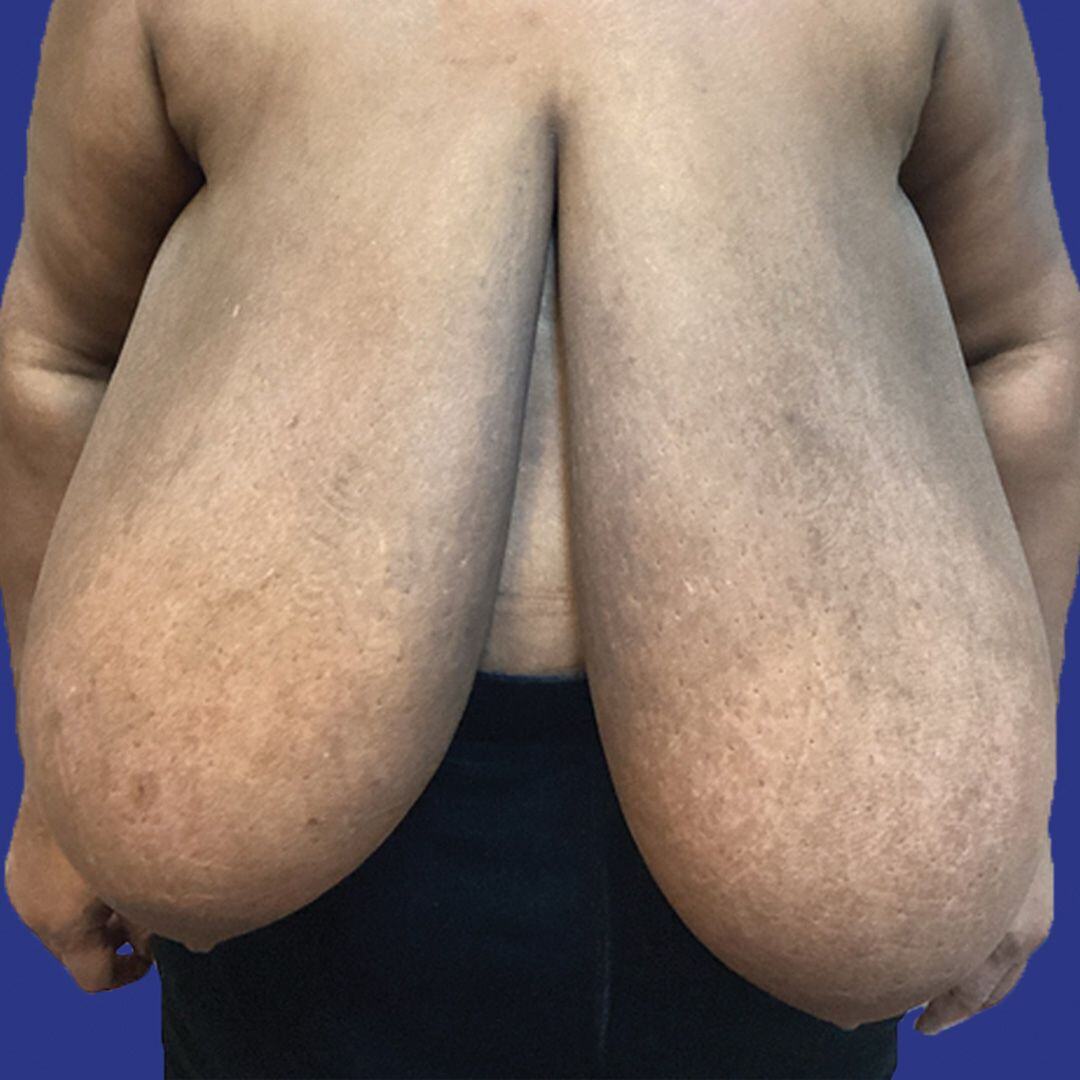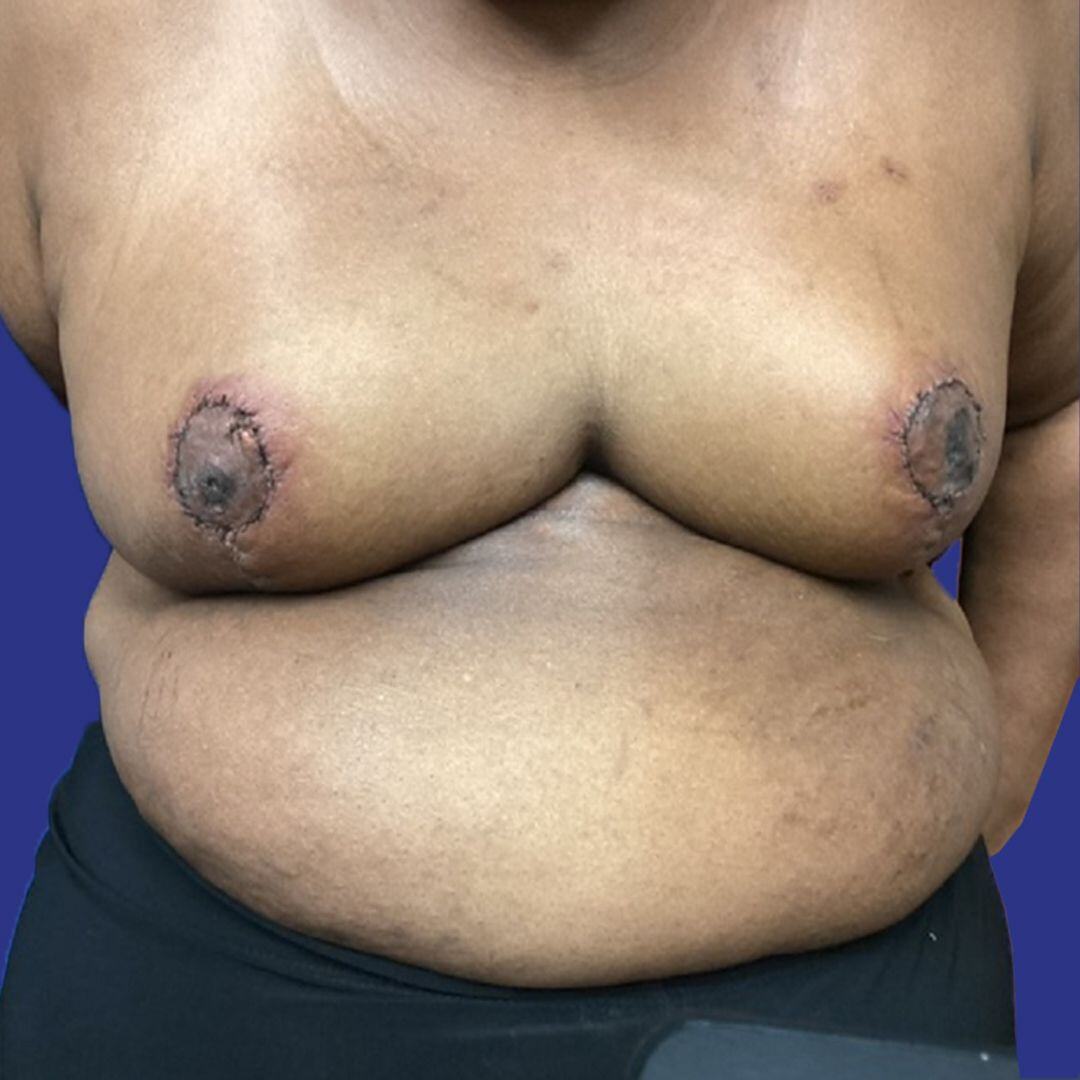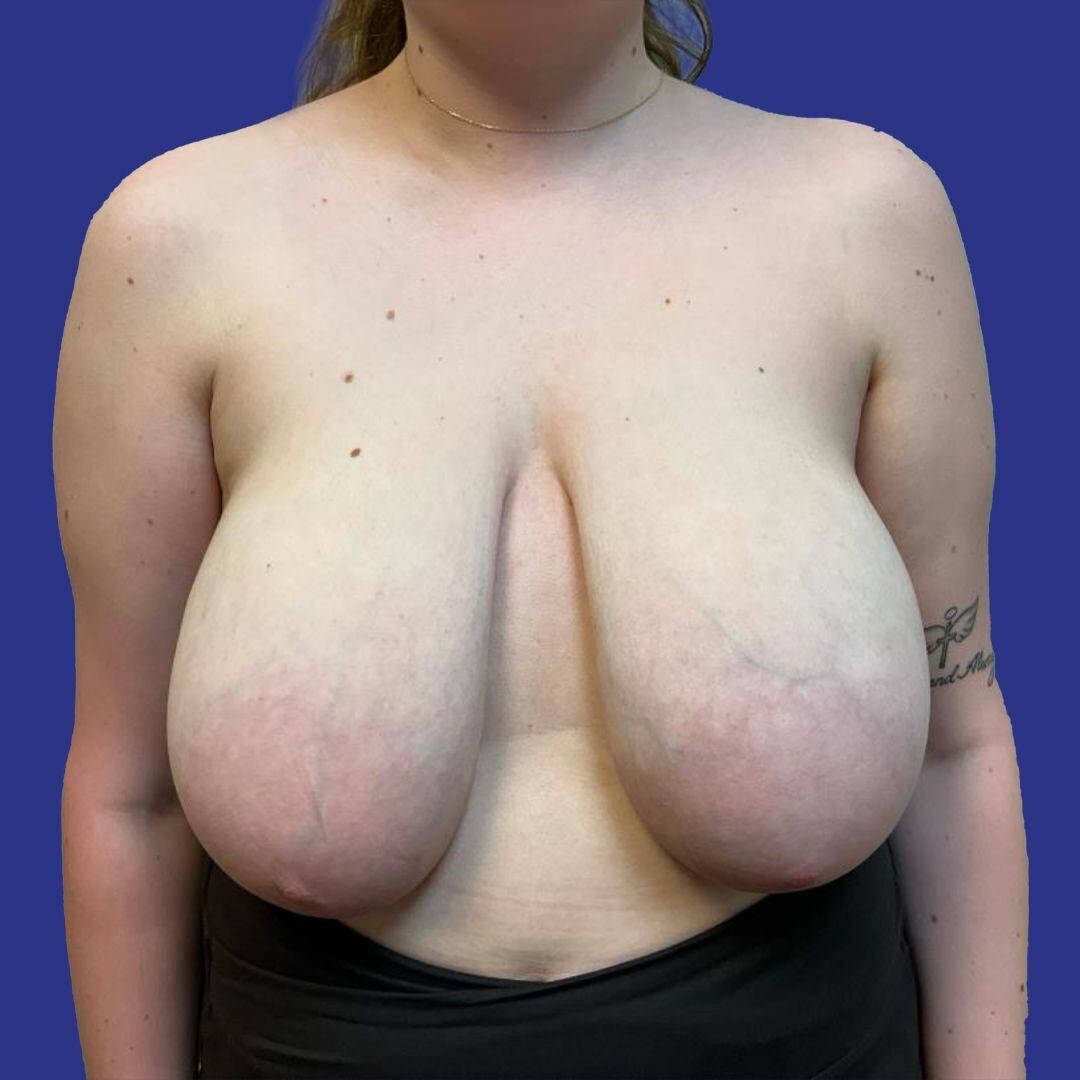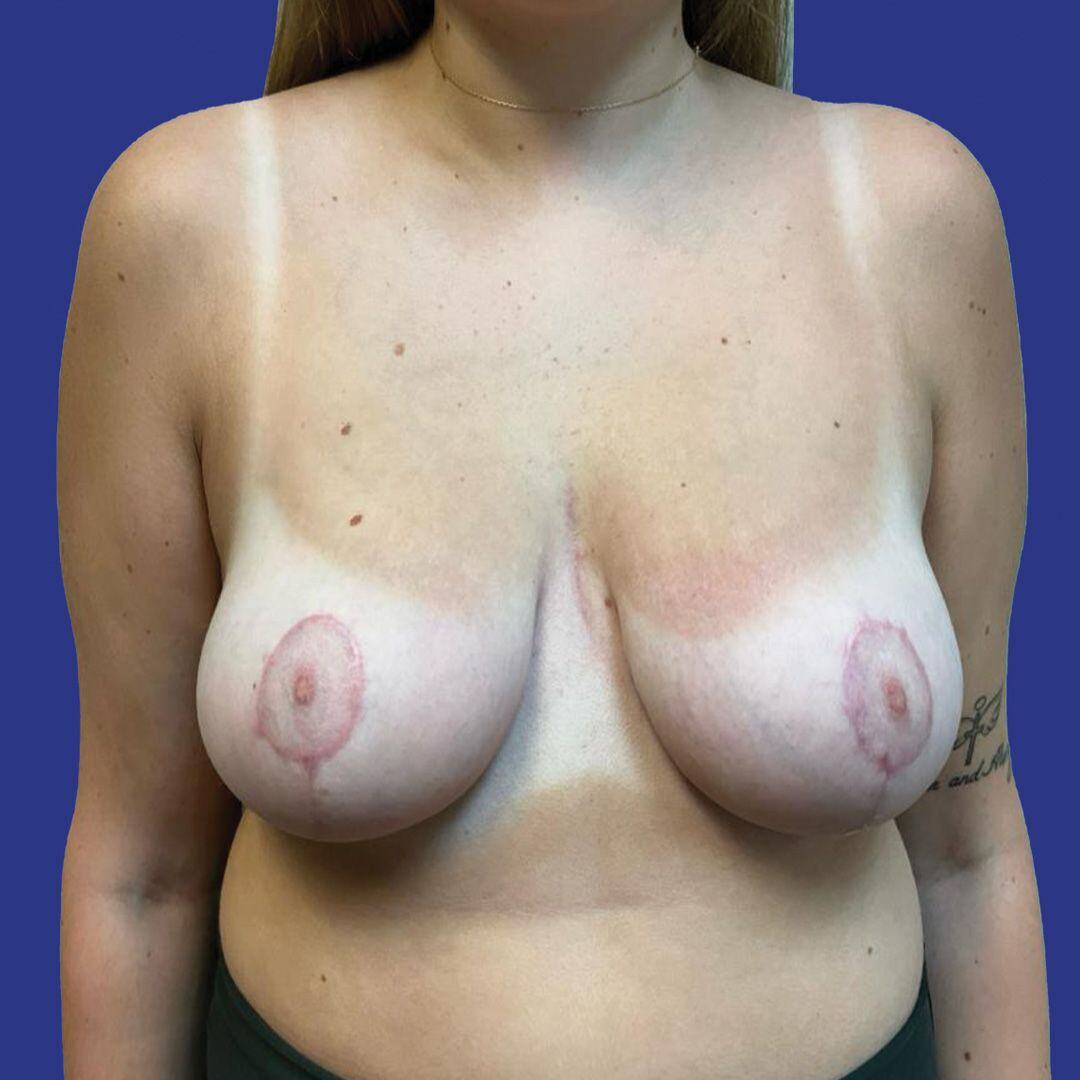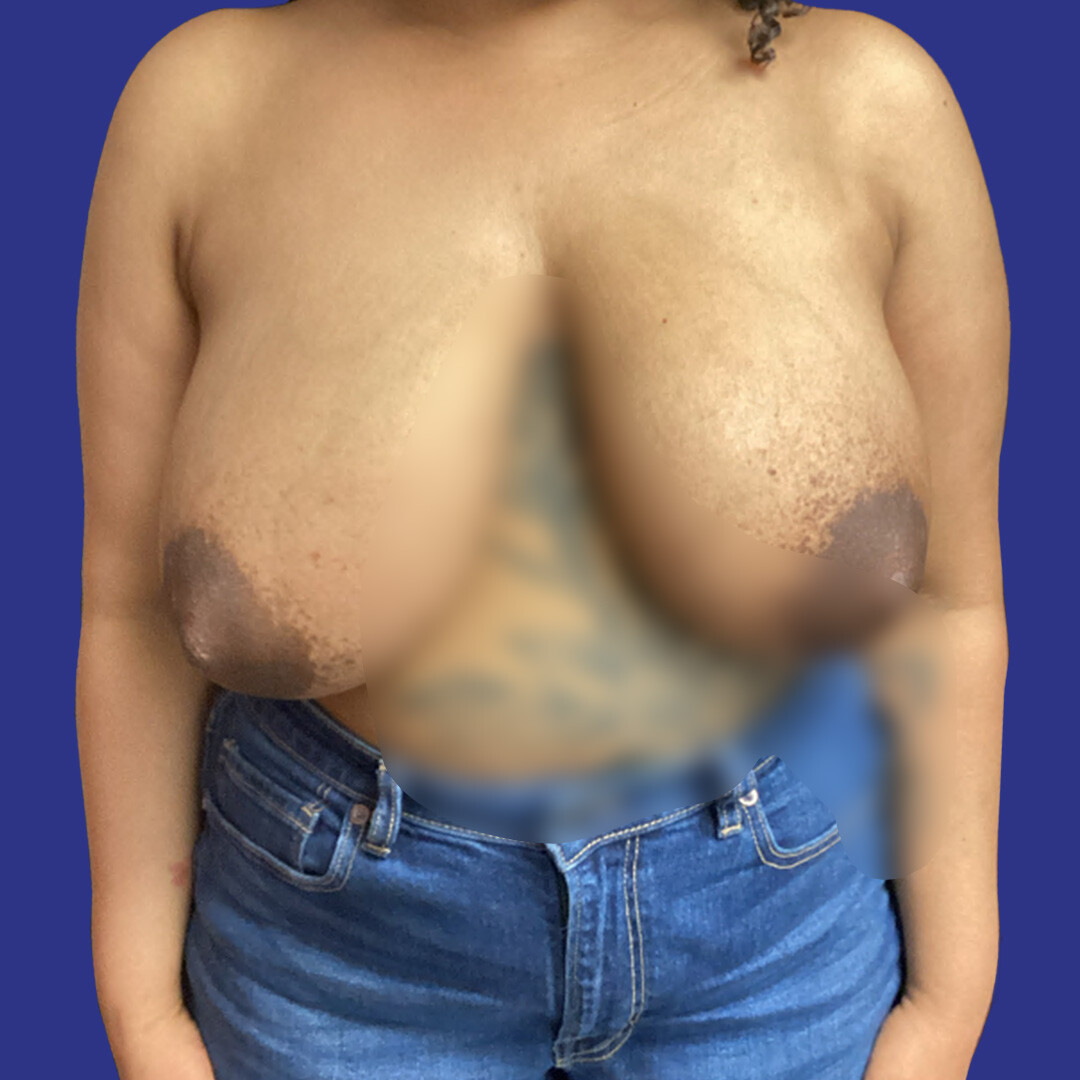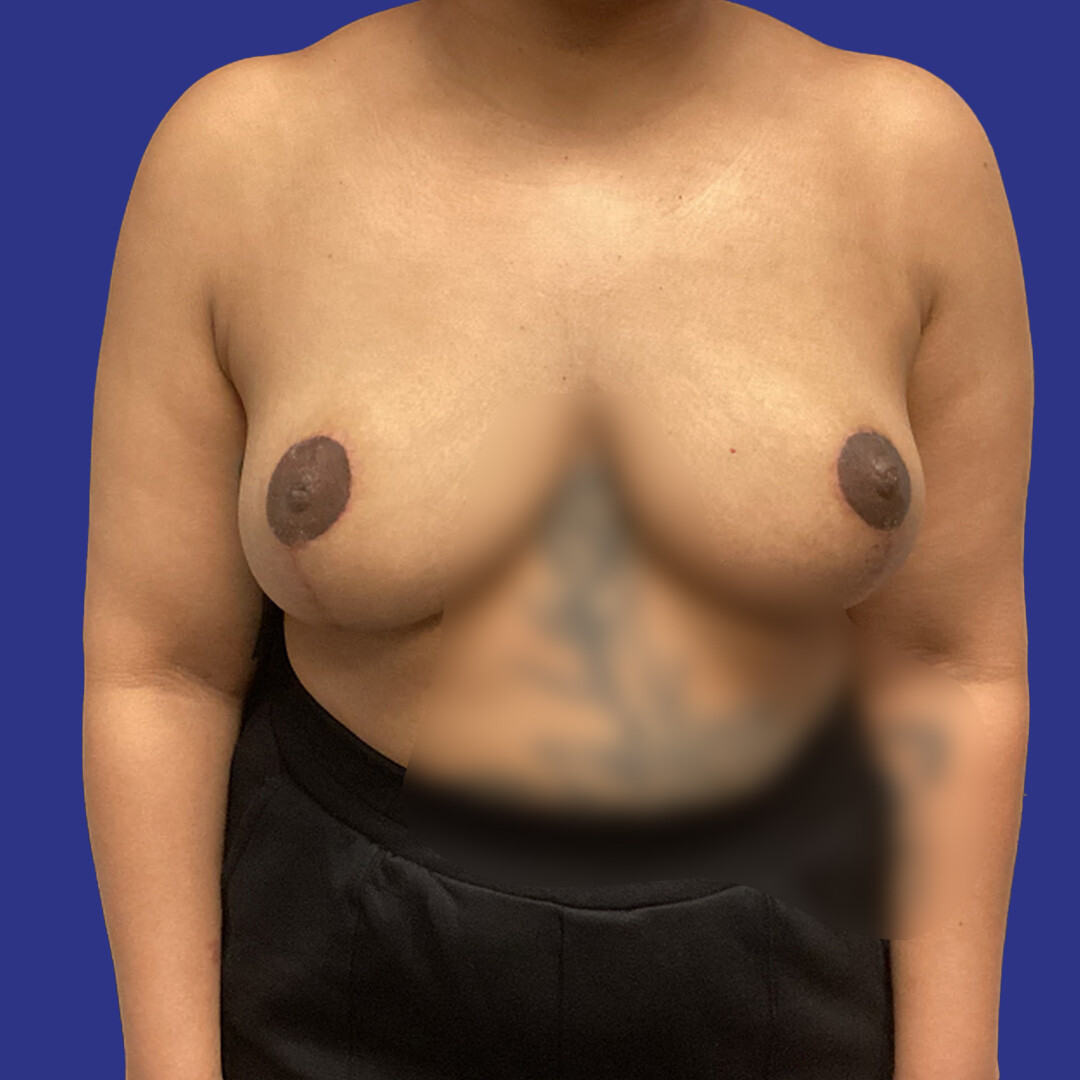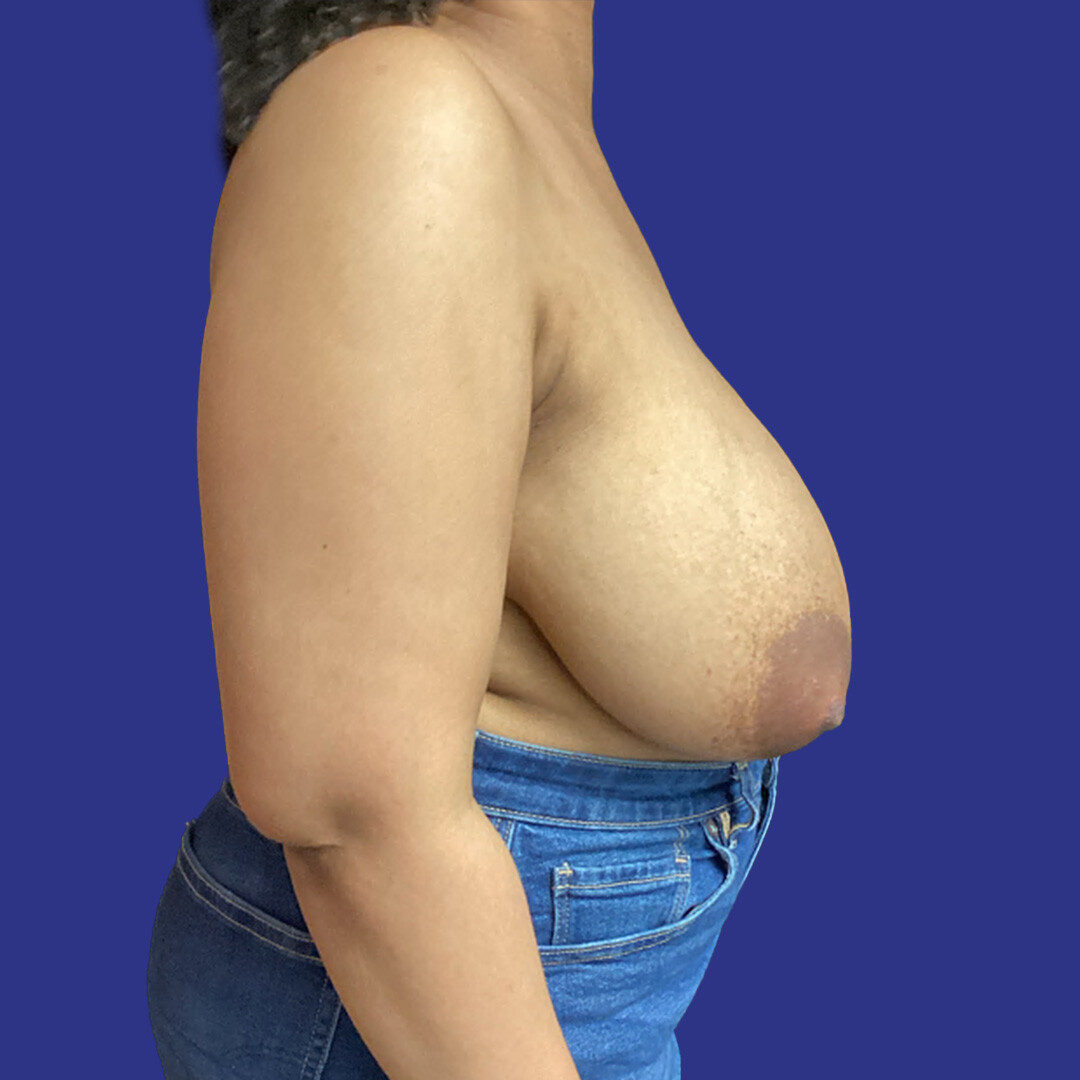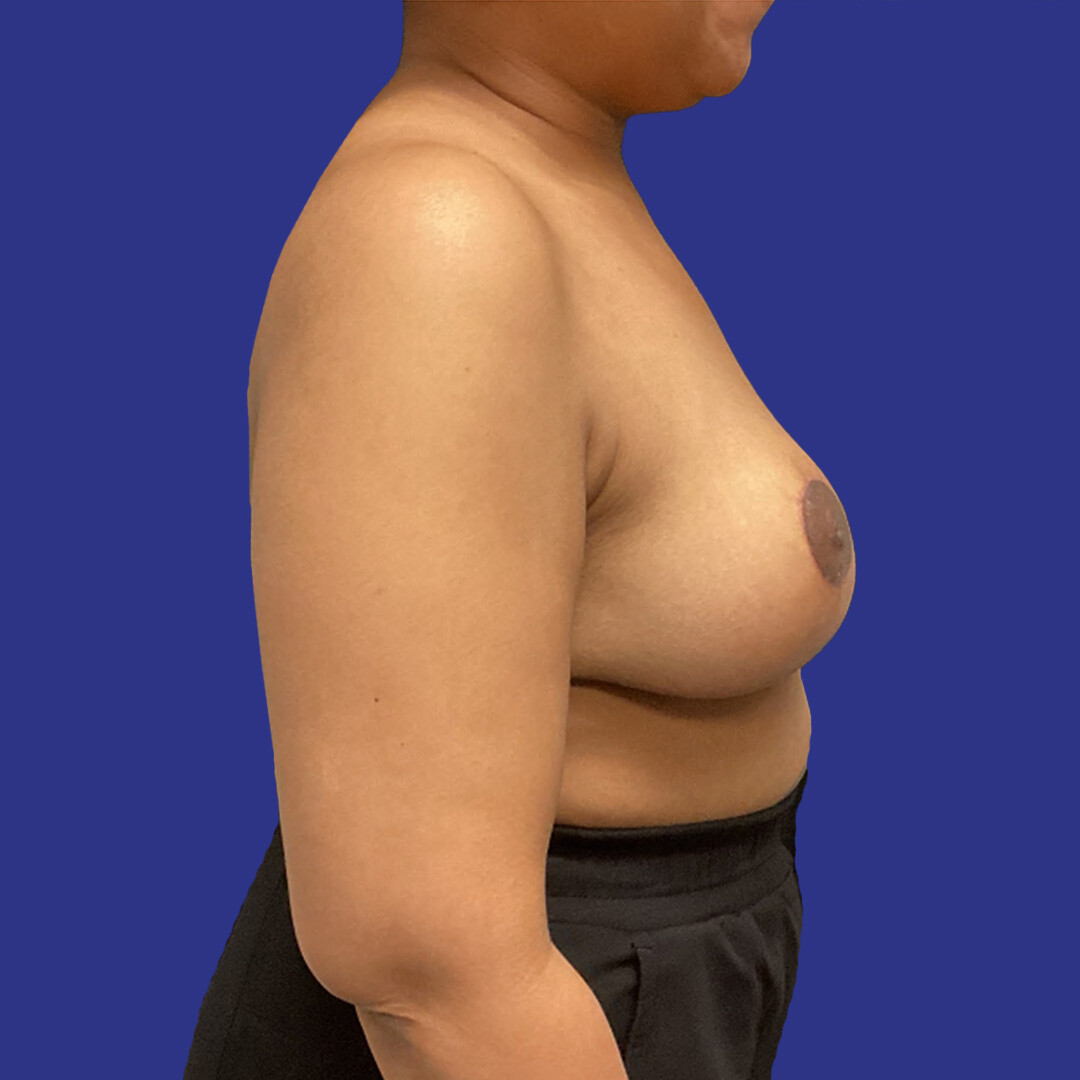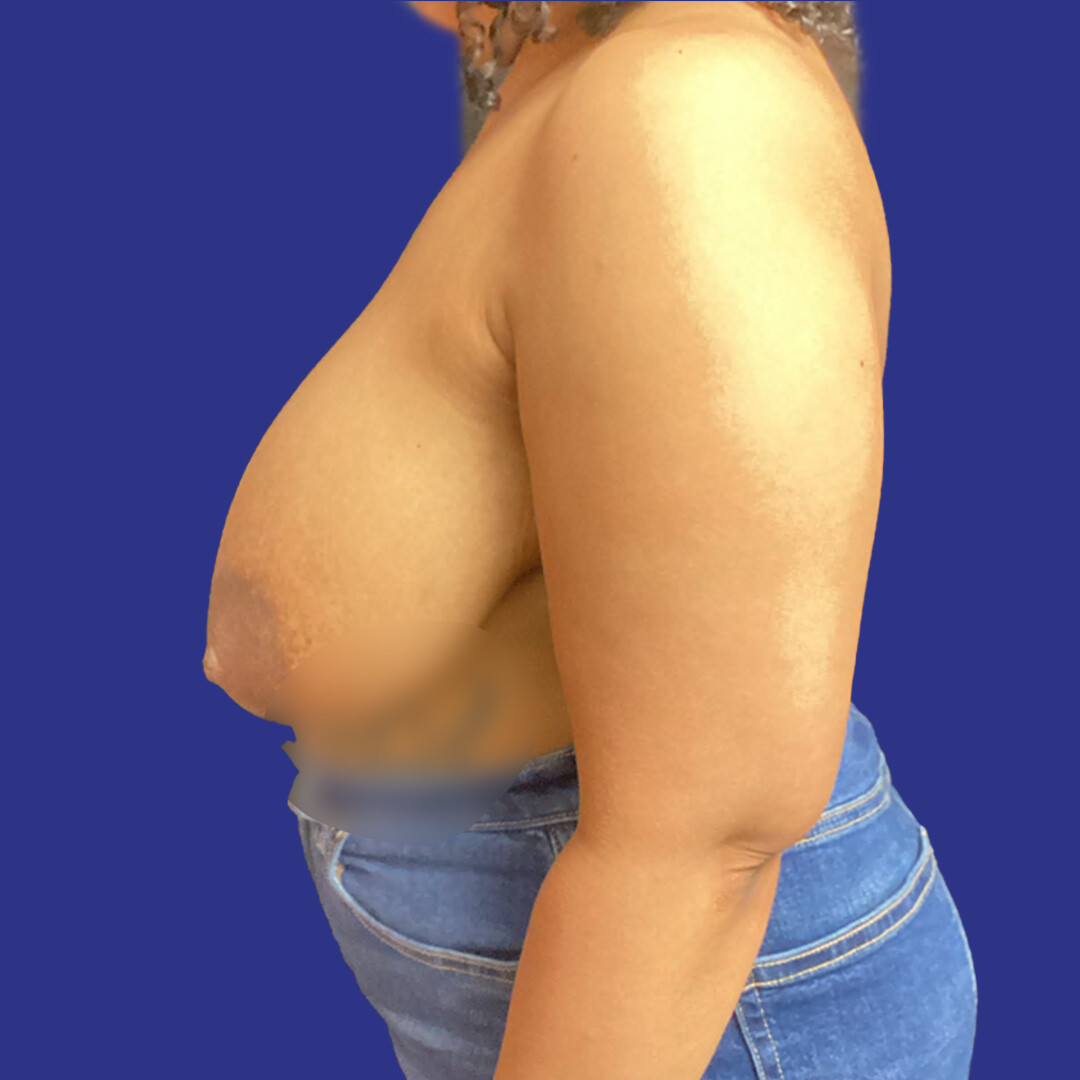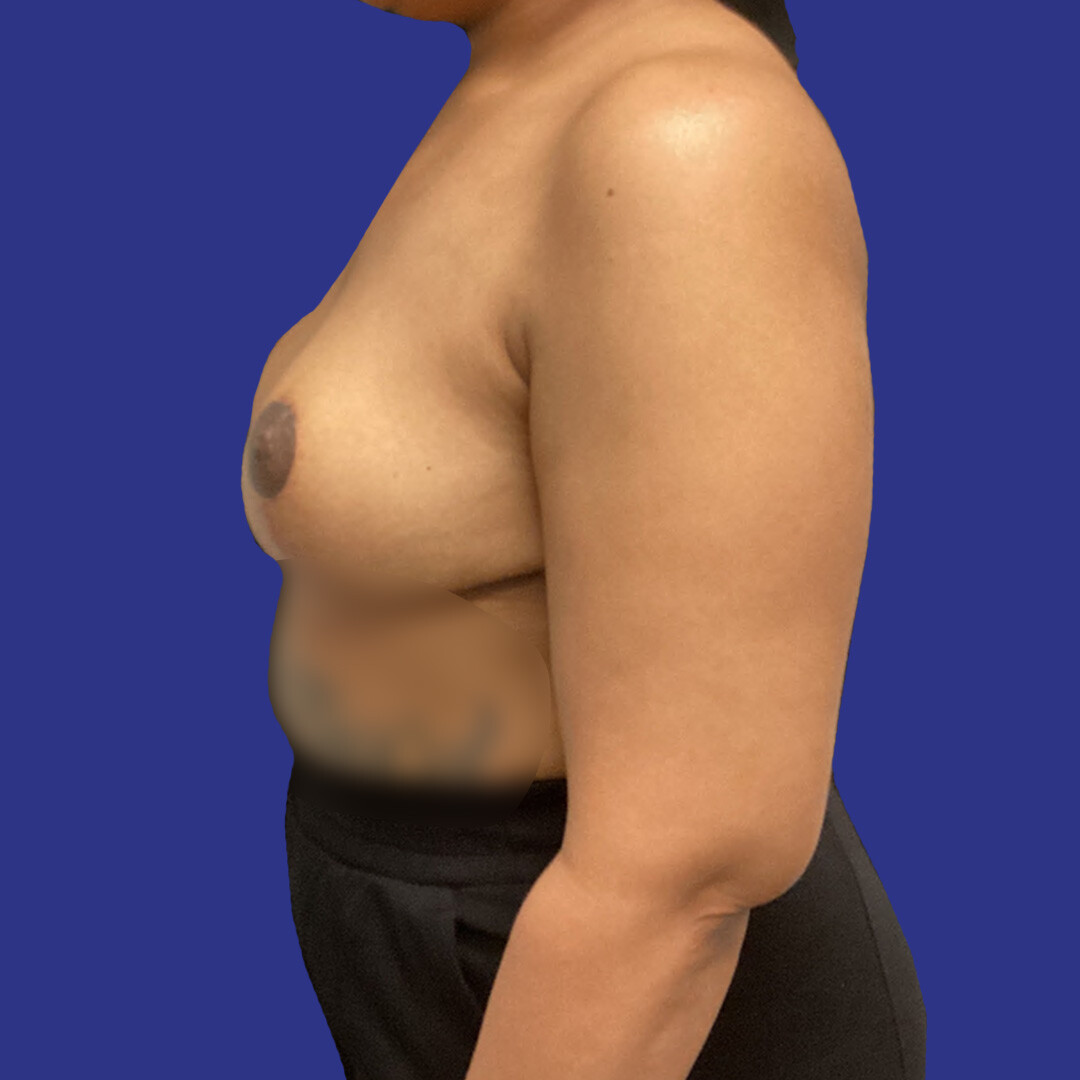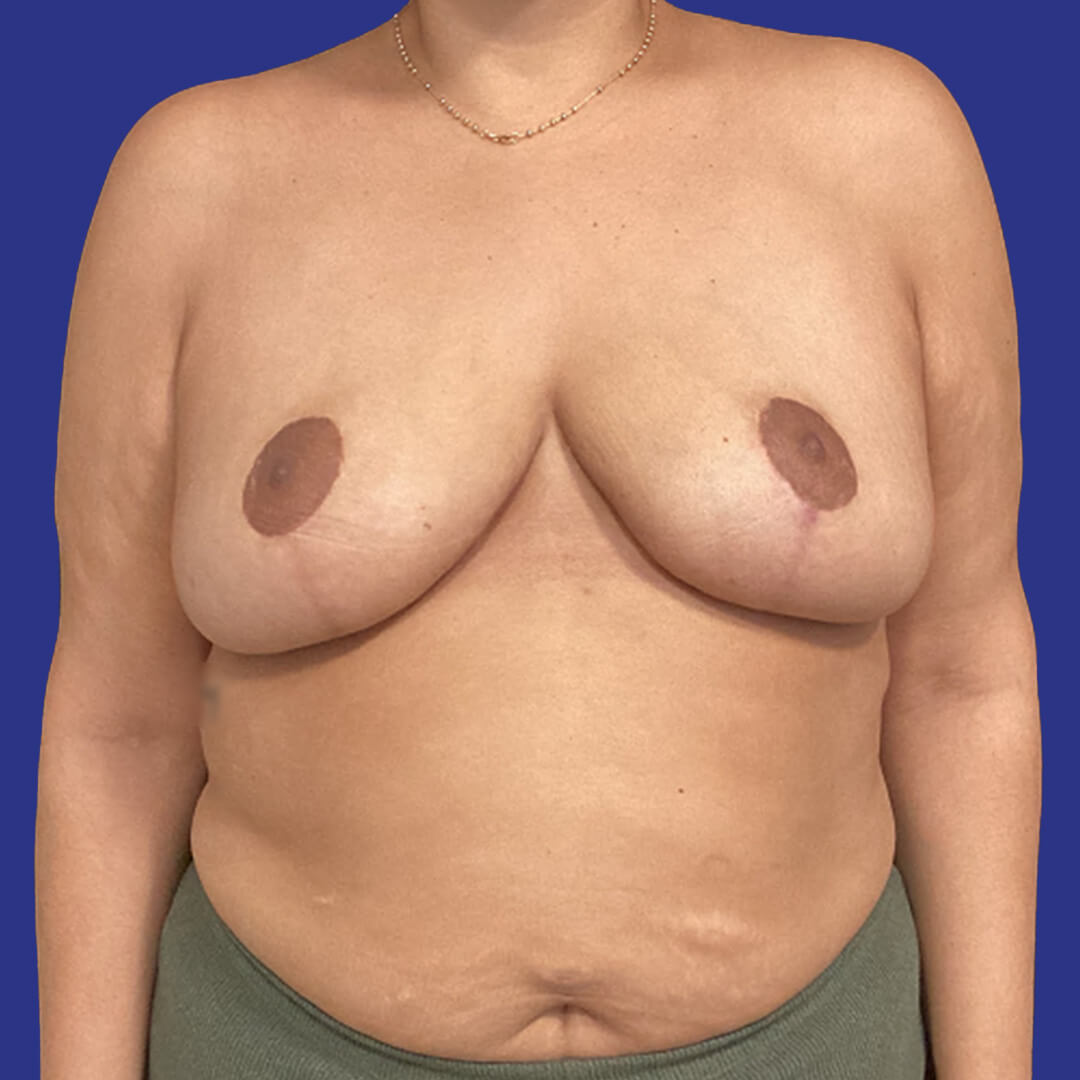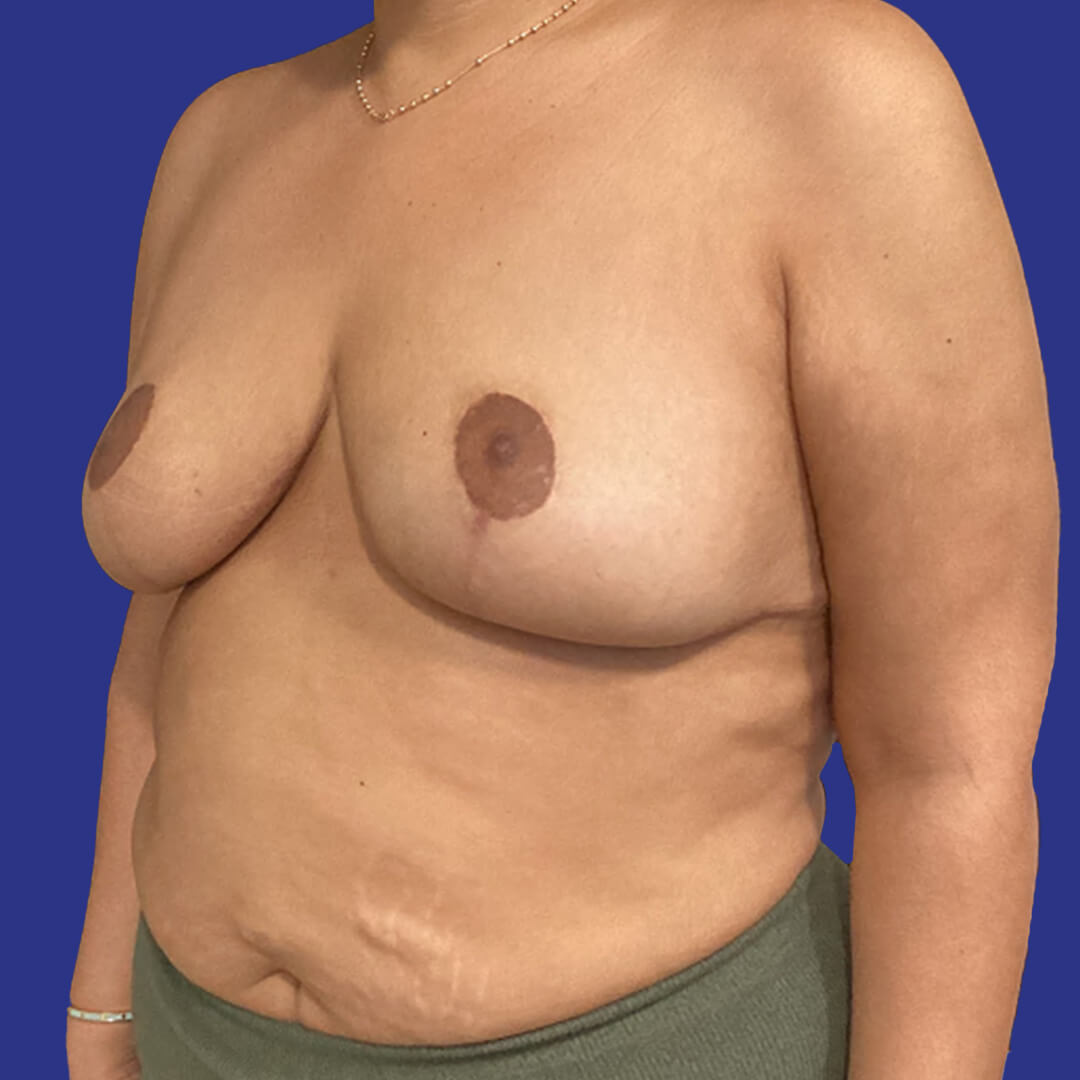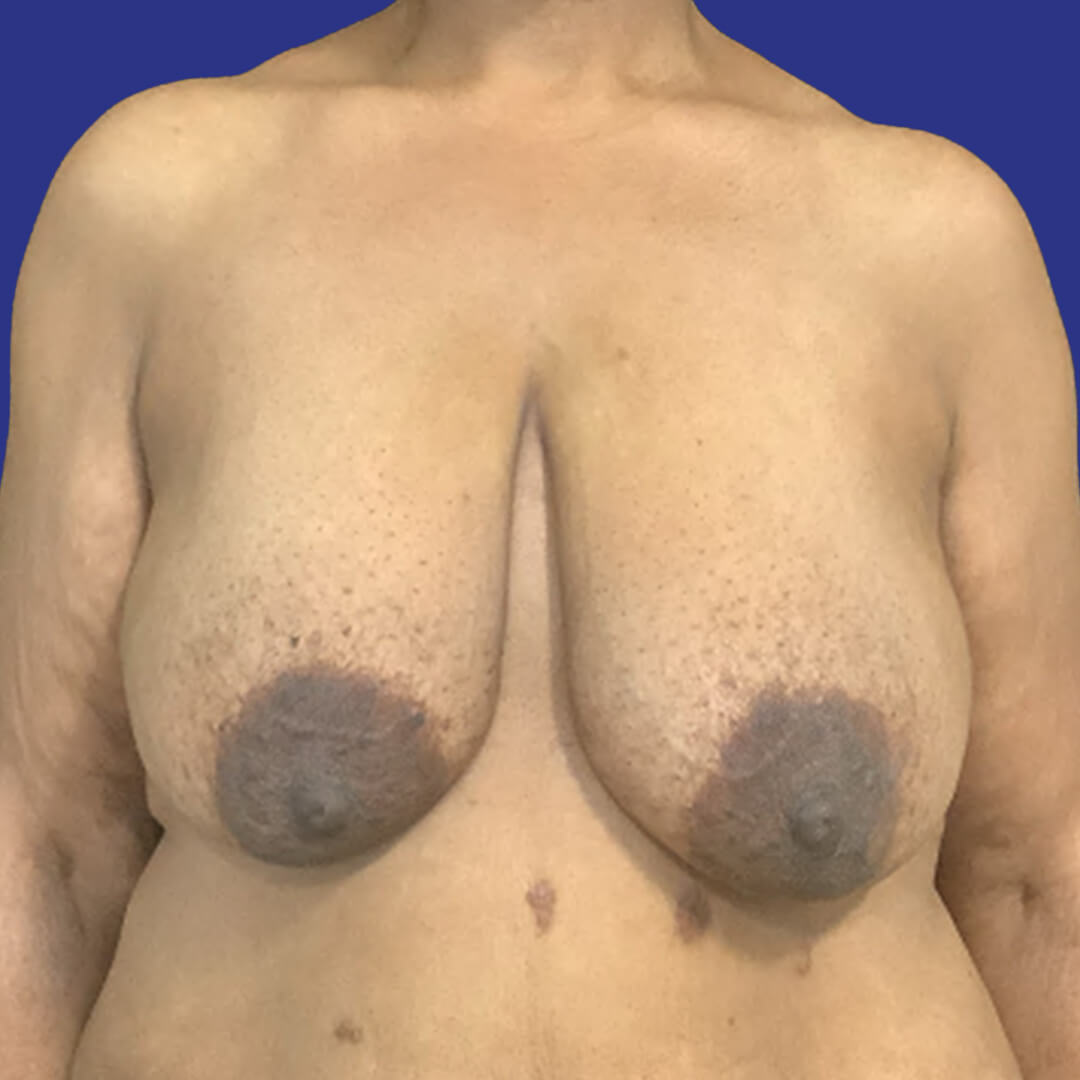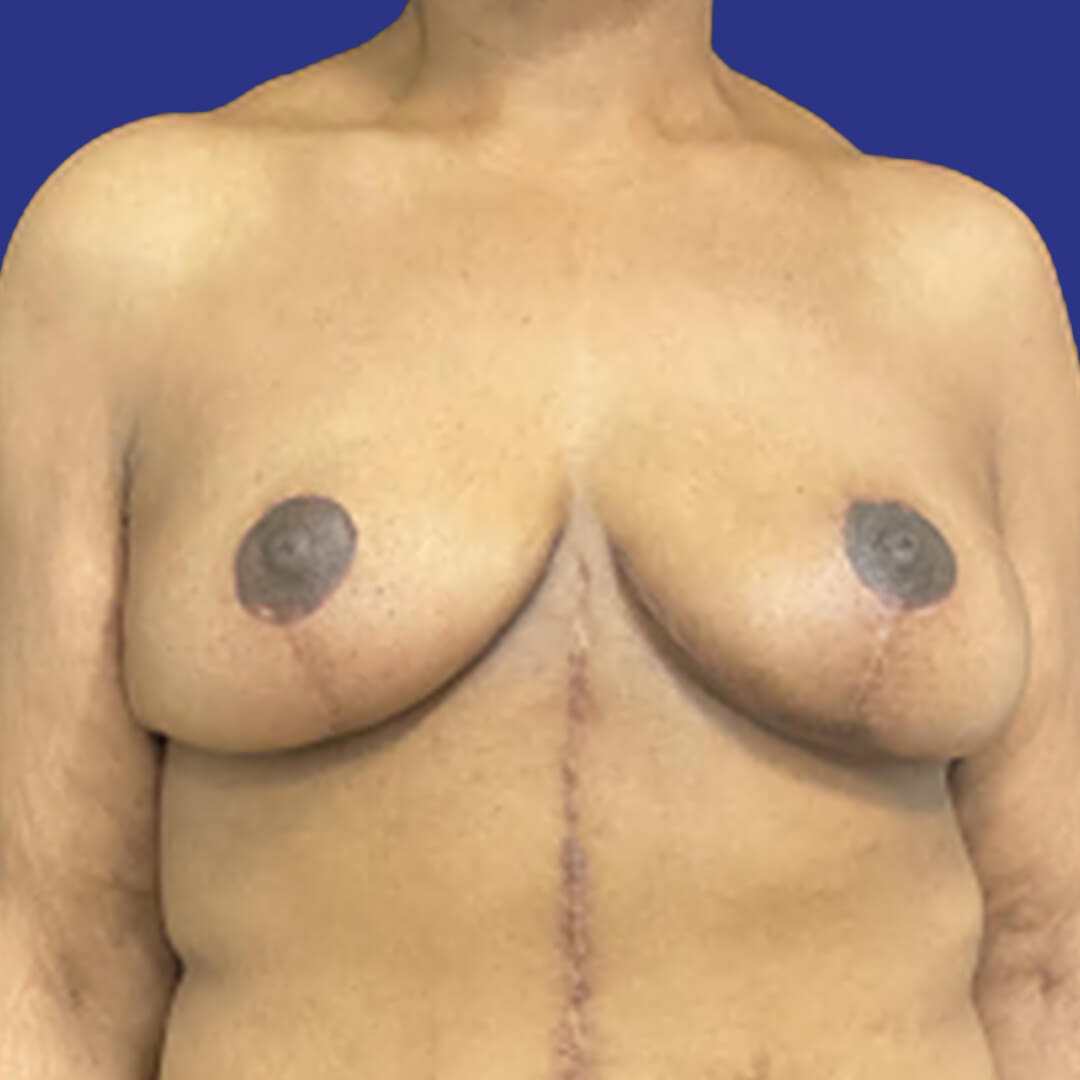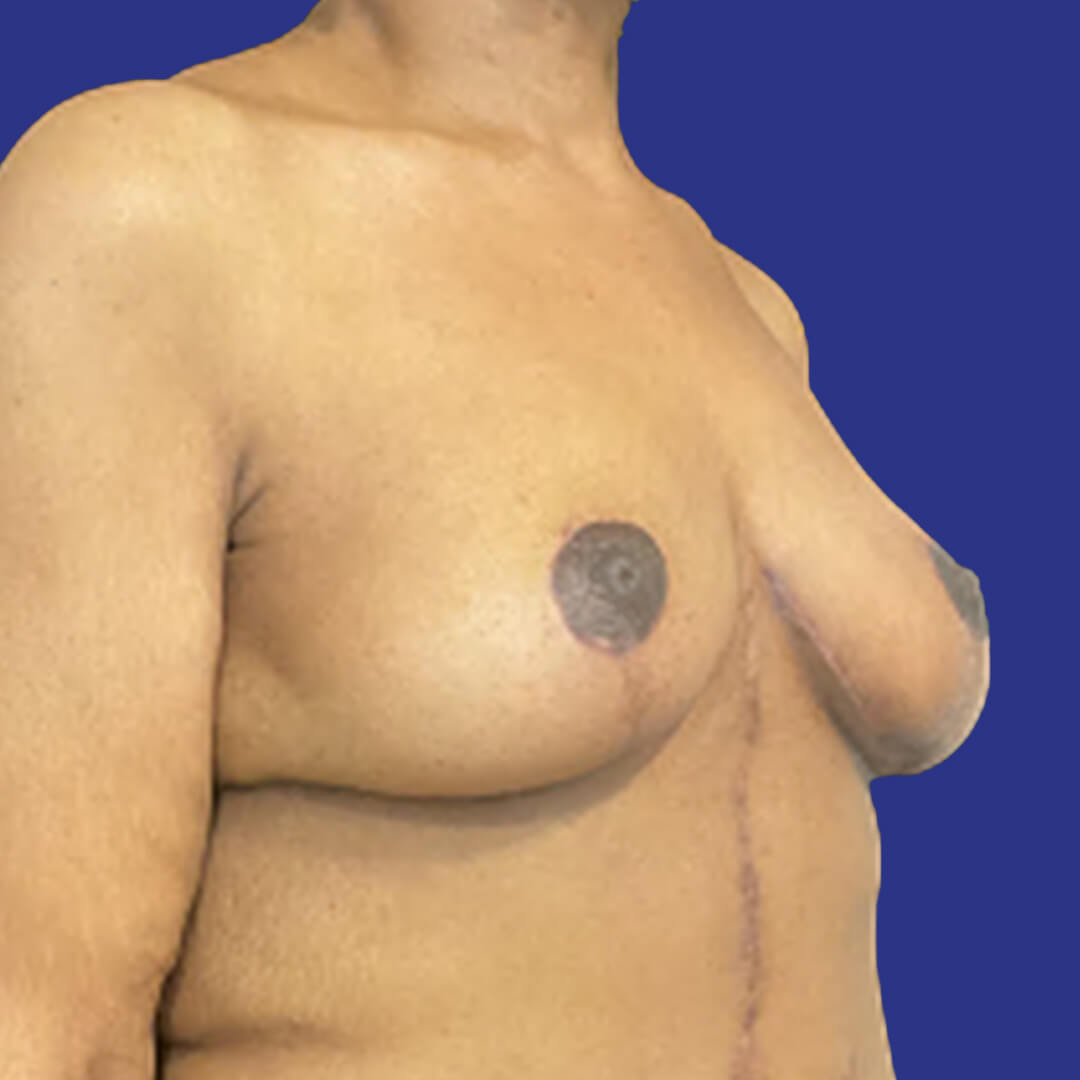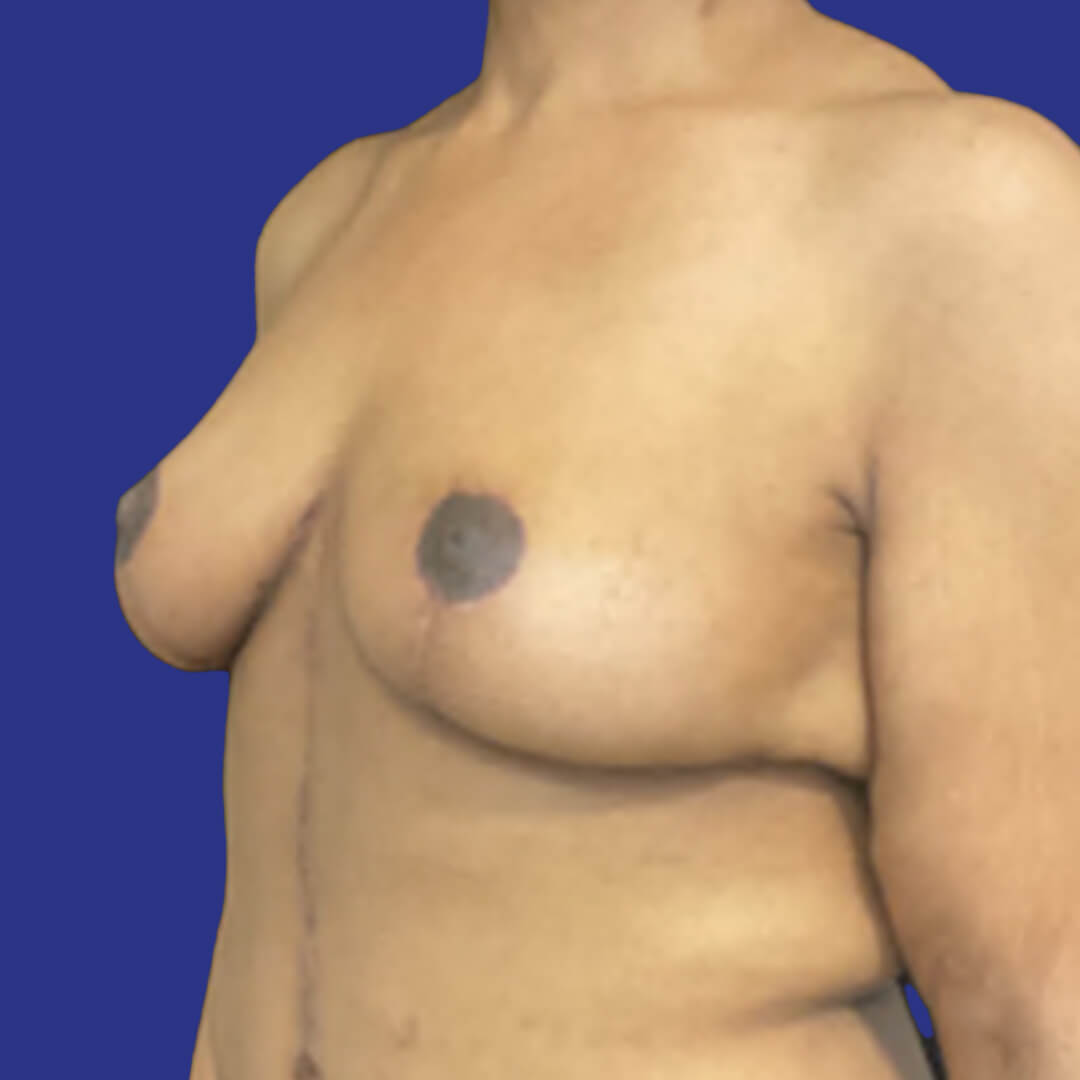
Enhance Comfort and Confidence with
Breast Reduction Surgery

Overview
Summary
Types of Breast Reduction
In some cases where an unusually large amount of breast tissue or skin needs to be removed, the best approach is a complete, circular cut around the nipple. The nipple is fully detached, and hen the remainder of the breast is reduced and reshaped. Then the nipple is regrafted into an appropriate position on the reshaped breast. Because the nipple has been detached and reattached, this technique is not recommended for anyone hoping to breastfeed or women who want to maintain nipple sensation during intimacy.
This is one of the most common breast reduction procedures. The nipple size is reduced, and excess skin, fat, and breast tissue are removed. The nipple is then moved upward into a keyhole-shaped incision, and excess skin is removed at the bottom of the breast. This is recommended for large, low-hanging breasts and those hoping to maintain breastfeeding ability and nipple sensation. The scar shape is sometimes referred to as an anchor.
This fat-removal procedure significantly reduces breast size and weight without the recovery time and surgical scarring associated with traditional surgery. Natural breast shape does not change during this procedure. However, decreased weight in the breasts improves tissue elasticity, often resulting in a visibly lifted, more youthful appearance.
Recognized for its reduced scarring and improved long-term appearance, a short scar breast reduction is sometimes called a "lollipop incision" because it involves a circle-shaped incision around the nipple and a straight vertical cut below the nipple down to the crease at the bottom of your breast. The breast is lifted and reshaped, and the nipple is moved up to create balance and symmetry. This technique is recommended for women with mild to moderately enlarged breasts.
This technique is recommended for those with minor to moderately enlarged breasts. During this procedure, skin and tissue are kept intact above the nipple to preserve the blood supply in that area. A circular-shaped incision is made around the nipple and a vertical incision below forming “keyhole” where skin, fat, and breast tissue can be removed. The breast is then reshaped, and the nipple is relocated higher on the breast, where skin and blood flow have been preserved.
In the superomedial pedicle technique, the nipple and areola remain attached to a portion of breast tissue (the “pedicle”) located in the upper inner quadrant of the breast. This approach preserves blood supply and nerve function, which increases the likelihood of maintaining nipple sensation and the ability to breastfeed. The surgeon removes excess skin and tissue from the lower and outer parts of the breast while reshaping and lifting the remaining tissue to achieve a smaller, more youthful contour. This technique is often chosen for its balance between aesthetic results and functional preservation.
Candidate for Breast Reduction Surgery?
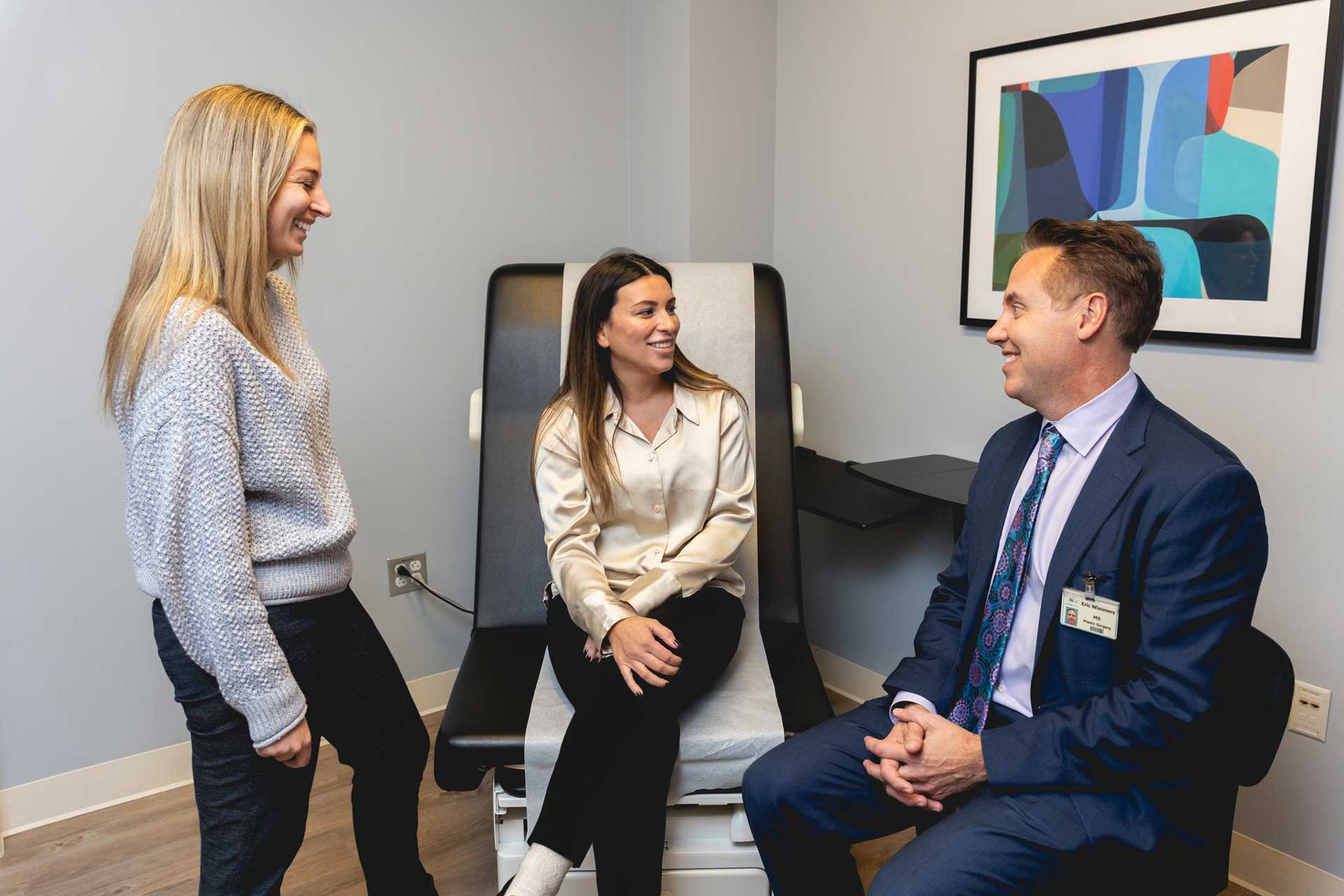
Consultation
Breast reduction surgical consultations are available at all Plastic Surgery Center locations. The best surgical approach for you will depend on a variety of personal and health-related factors. With this in mind, our surgeons will review your medical history and discuss your ideal surgical outcomes to make personalized surgical recommendations. Using computer-assisted photography, they can also provide sample imagery of your potential surgical results.
Questions
about this procedure?
Breast Reduction: An Essential Guide to Surgery and Recovery
What to Expect
Our expert surgeons will recommend the breast reduction procedure best for your surgical goals, your health history, and the amount of skin, tissue, and fat to be removed. The least invasive approach is liposuction-only. There are also several other surgical options for carefully cutting around the nipple, reshaping and lifting the breast, and then replacing the nipple at the ideal location on the newly formed breast.
During breast reduction surgery, one of the following incisions will likely be used. The circular areola method involves a cut around the dark patch of skin surrounding the nipple (areola). A keyhole incision opens up a semi-circle above the areola and two vertical cuts, creating a "keyhole-shaped" opening through which the nipple can stay connected to blood supply and nerves.
In this case, the nipple is moved up into the keyhole after excess tissue, skin and fat are removed. Finally, an "anchor cut" combines a verticle cut below the nipple and a lateral cut along the bottom of the breast, resulting in incisions and scars shaped like an anchor.
Once the incisions are made, the surgeon will carefully reshape the breast tissue and remove any excess skin. Typically, our surgeons close incisions with buried, dissolvable stitches, a technique that reduces visible scars and increases patient comfort.
Depending on the surgical technique, small drain tubes may be placed on each breast to allow excess fluid that builds up where breast tissue was removed during surgery.
Recovery &
Results
Each person's recovery from breast reduction will vary based on the extent of skin and tissue involved and your healing process. A sterile bandage is placed over the incisions following surgery. Your breasts will be wrapped in a supportive bandage or surgical bra. Typically, you can expect to go home within a few hours.
Recovery and discharge instructions depend on the nature of your surgery, but you should plan to have a family member or friend drive you home. Pain and swelling can be managed with medication and ice in the first few days after surgery.
Some patients will go home with small tubes to drain blood and fluid that collect at the surgical site. Care instructions will be included in your discharge paperwork, and drain tubes will be removed in the office during your post-operative visit.
Most patients can resume regular activity within 2-3 weeks. Heavy lifting and strenuous exercise should be avoided for up to 6 weeks. In most cases, the long-term results of breast reduction will be seen in three to six months. However, it can take up to a full year or longer to experience complete healing.
Envision What’s Possible.
Explore photos of real patients with real, life-changing outcomes.
How Breast Reduction Eliminated Her Shoulder
& Back Pain: Lateefah's Story
Breast Reduction Surgeons in NJ
Our board-certified plastic surgeons combine the most advanced surgical techniques and decades of experience to ensure safety and satisfaction for each patient. Through rigorous training and exceptional attention to detail, we pride ourselves in providing world-class care and surgical outcomes that will exceed your expectations.

Hamid Abdollahi
MD, FACS
Russell Ashinoff
MD, FACS
Eric I. Chang
MD, FACS
Kari L. Colen
MD, FACS
Joseph Dayan
MD
Stephen Dudick
MD
Patrick Greaney
MD, FACS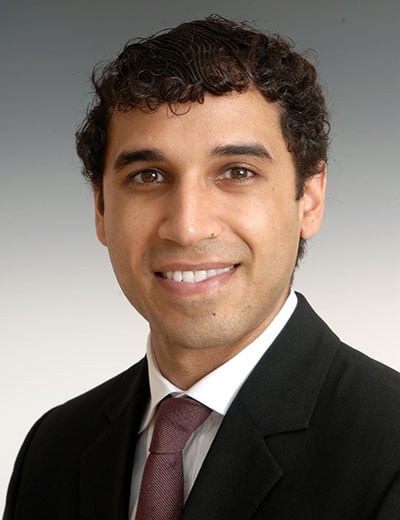
Ritwik Grover
MD
Sean Herman
MD, FACS
Zuhaib Ibrahim
MD, FACS
Matthew Kaufman
MD, FACS
Chris Lakhiani
MD, FACS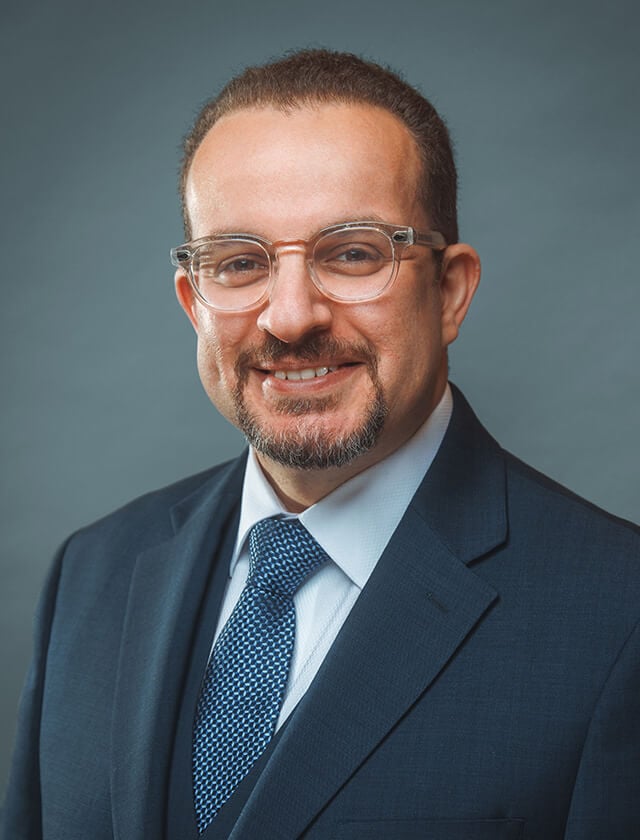
Ahmed Nasser
MD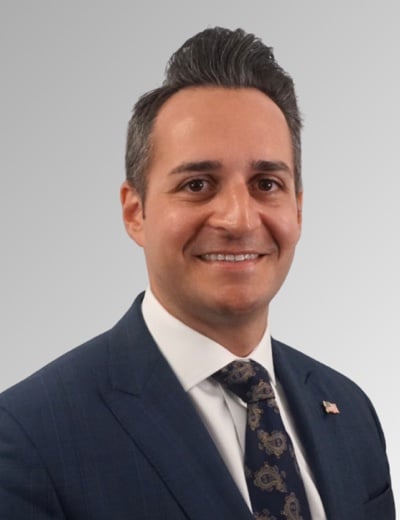
Robert T. Nevitt III
MD
Tushar Patel
MD, FACS
Sidney Rabinowitz
MD, FACS
Michael Rose
MD, FACS
Adam Saad
MD, FACS
Tzvi Small
MD, FACS
Hakan Usal
MD
Eric Wimmers
MD, FACS.jpg)
Karen Kaplan
MDFinancing & Insurance
Insurance coverage for breast reduction surgery can vary depending on the individual policy and the specific circumstances of the patient. In general, insurance companies will cover breast reduction surgery if it is deemed medically necessary. We will work with you and your health insurer to obtain the approvals for your covered surgical procedures. If you are interested in learning more about our cosmetic options, please contact us today at 833-615-2621.
Our Process

During your consultation, our expert surgeons will listen and work with you to fully understand the look you wish to achieve.

Your Options
We will review and explain all of your cosmetic options and identify which procedure is right for you.

Our friendly and compassionate staff and physicians will guide you through the entire process, answer all of your questions and alleviate any concerns.
Breast Reduction Surgeon in NJ
First Floor, STE 200 Red Bank, NJ 07701
Financing & Insurance
Plastic surgery is an investment. Our dedicated staff is happy to help patientsnavigate insurance coverage and understand the costs and financing of care.

You Deserve Comfort and Confidence
Take the first step toward a smaller bustline and bigger confidence . . .


